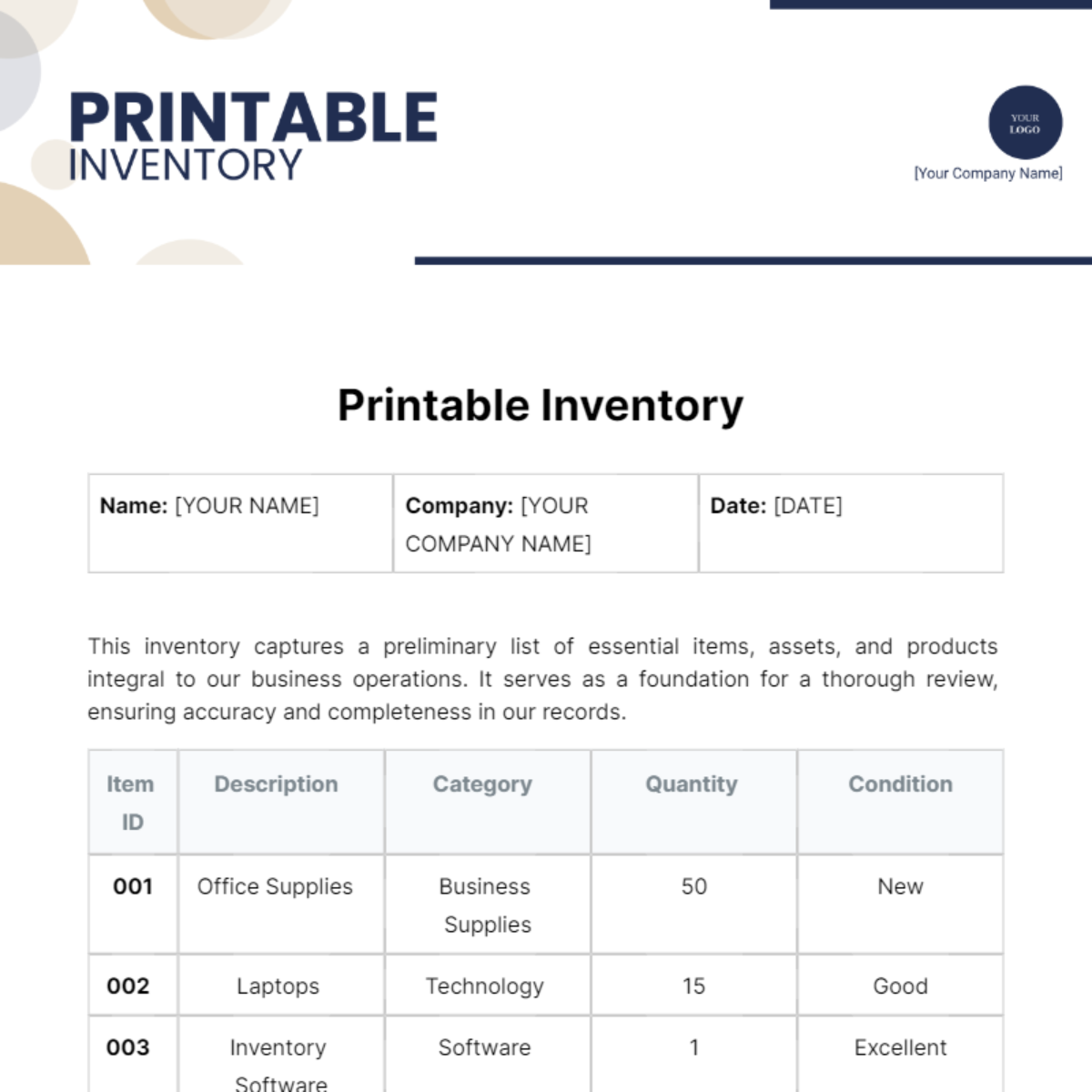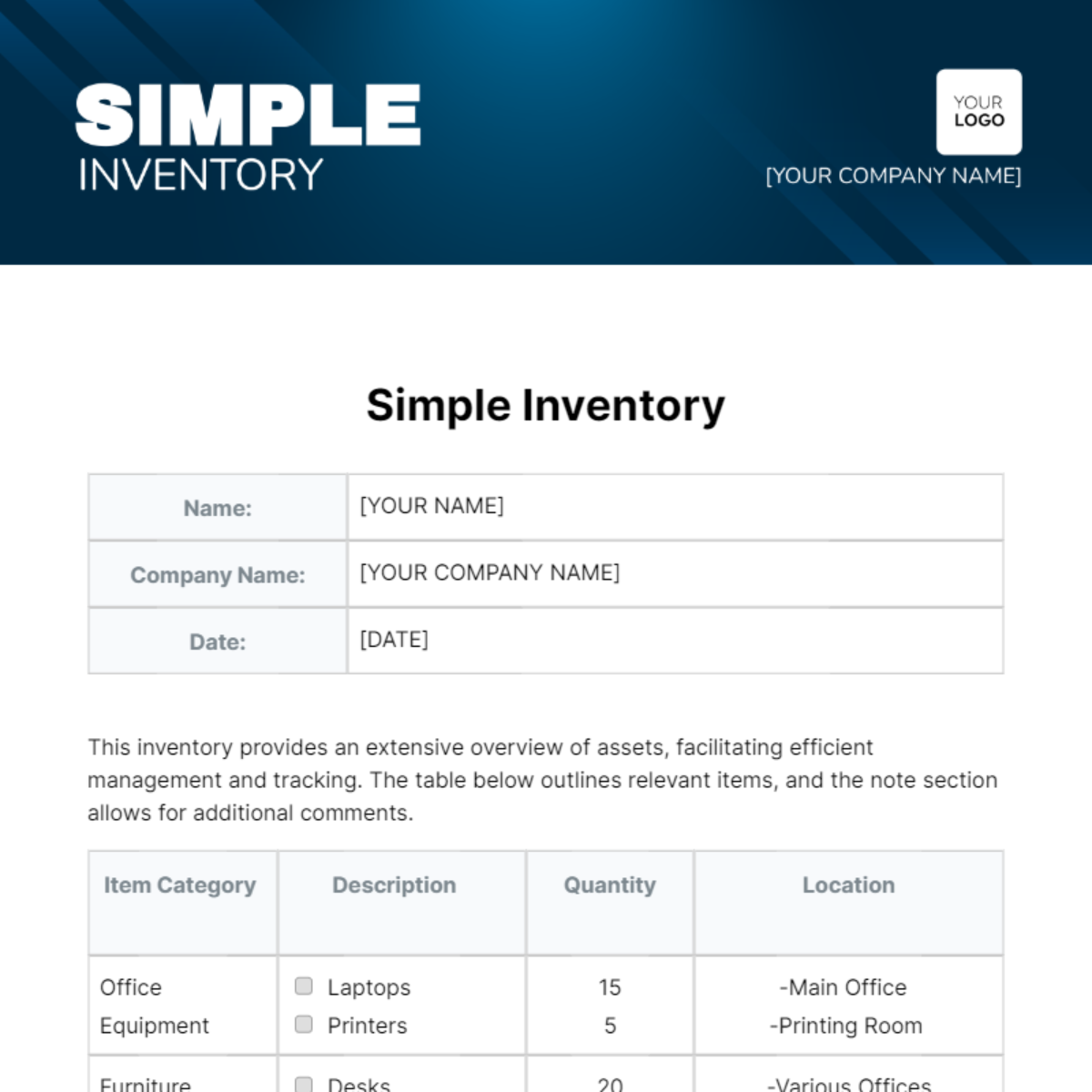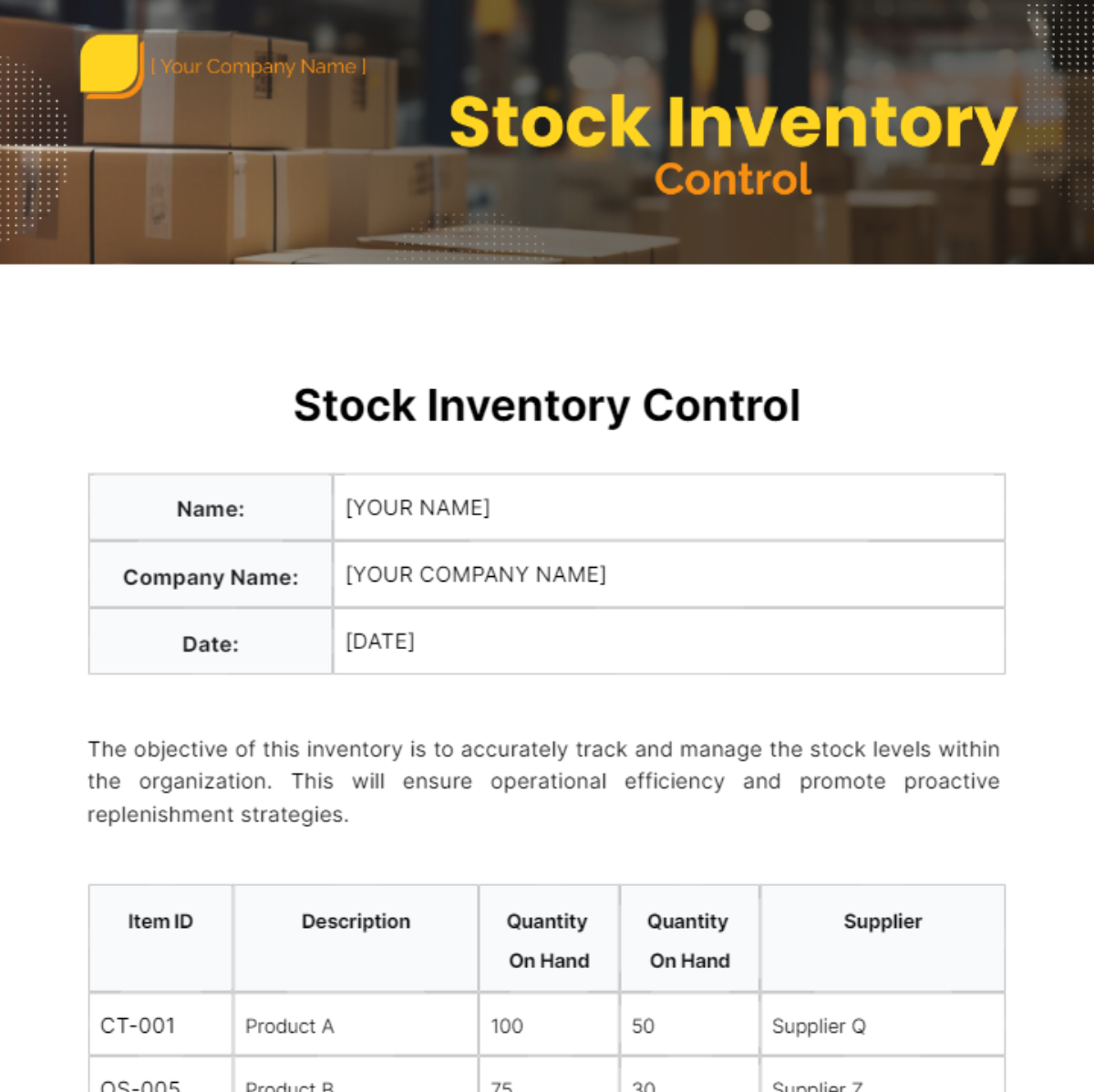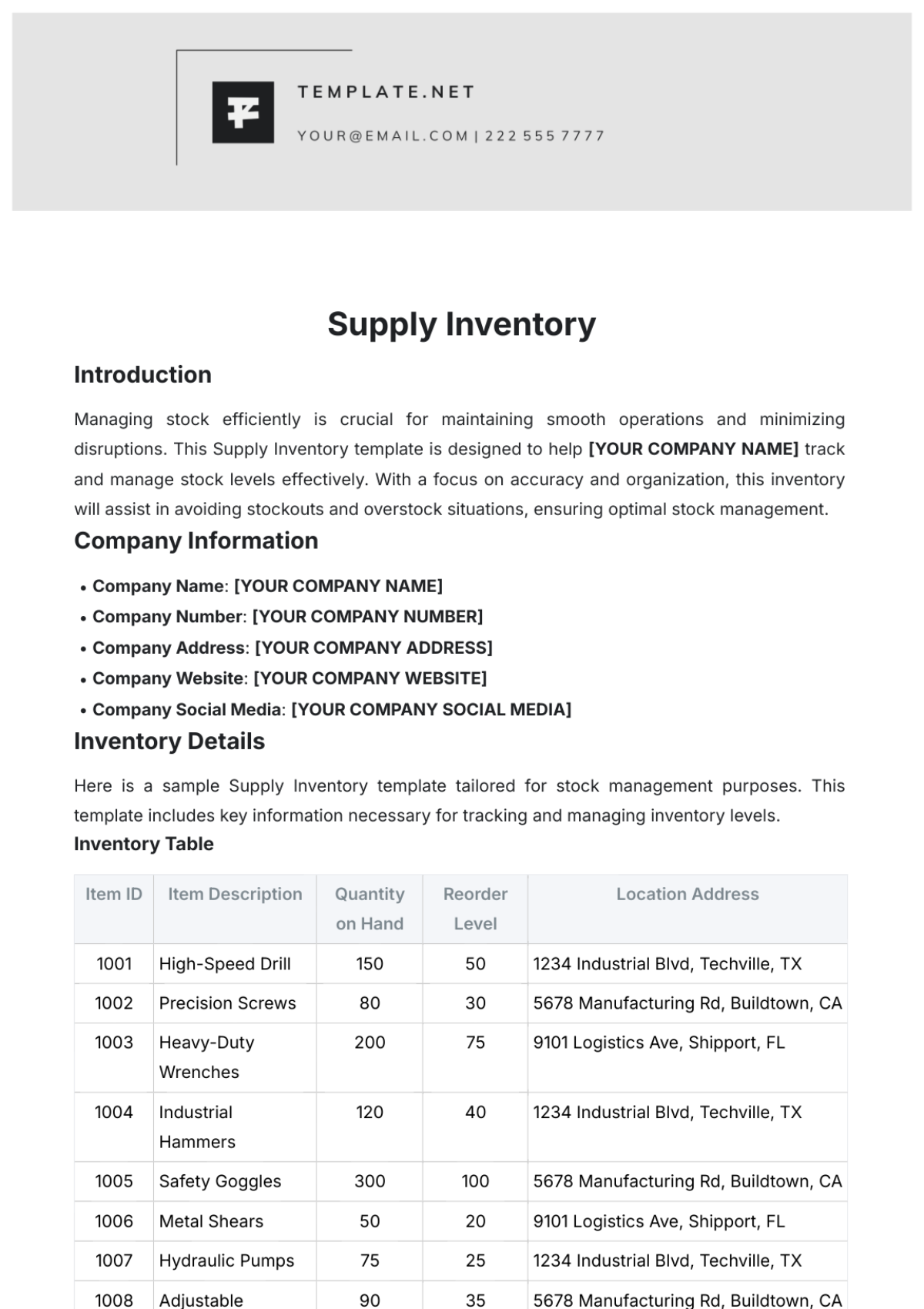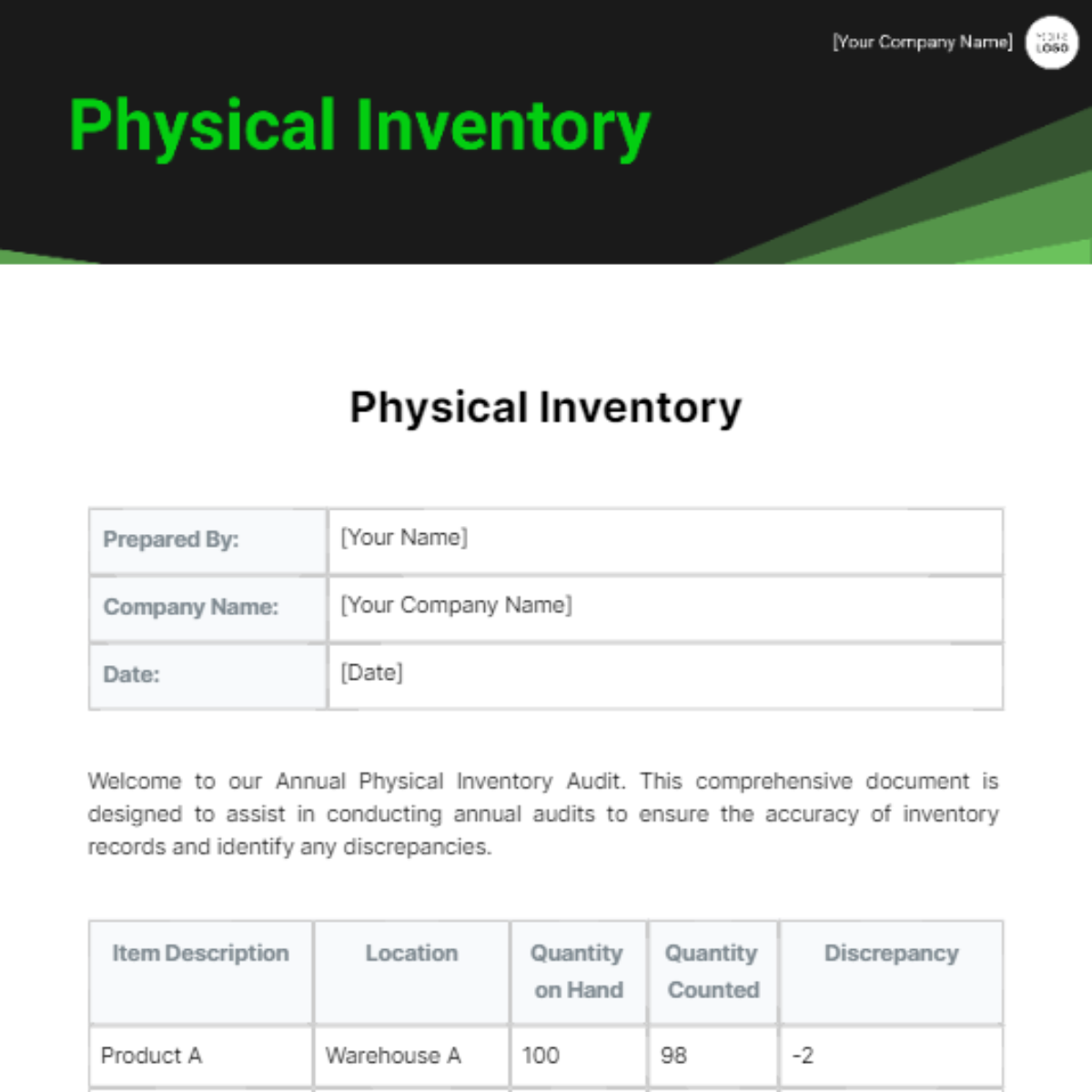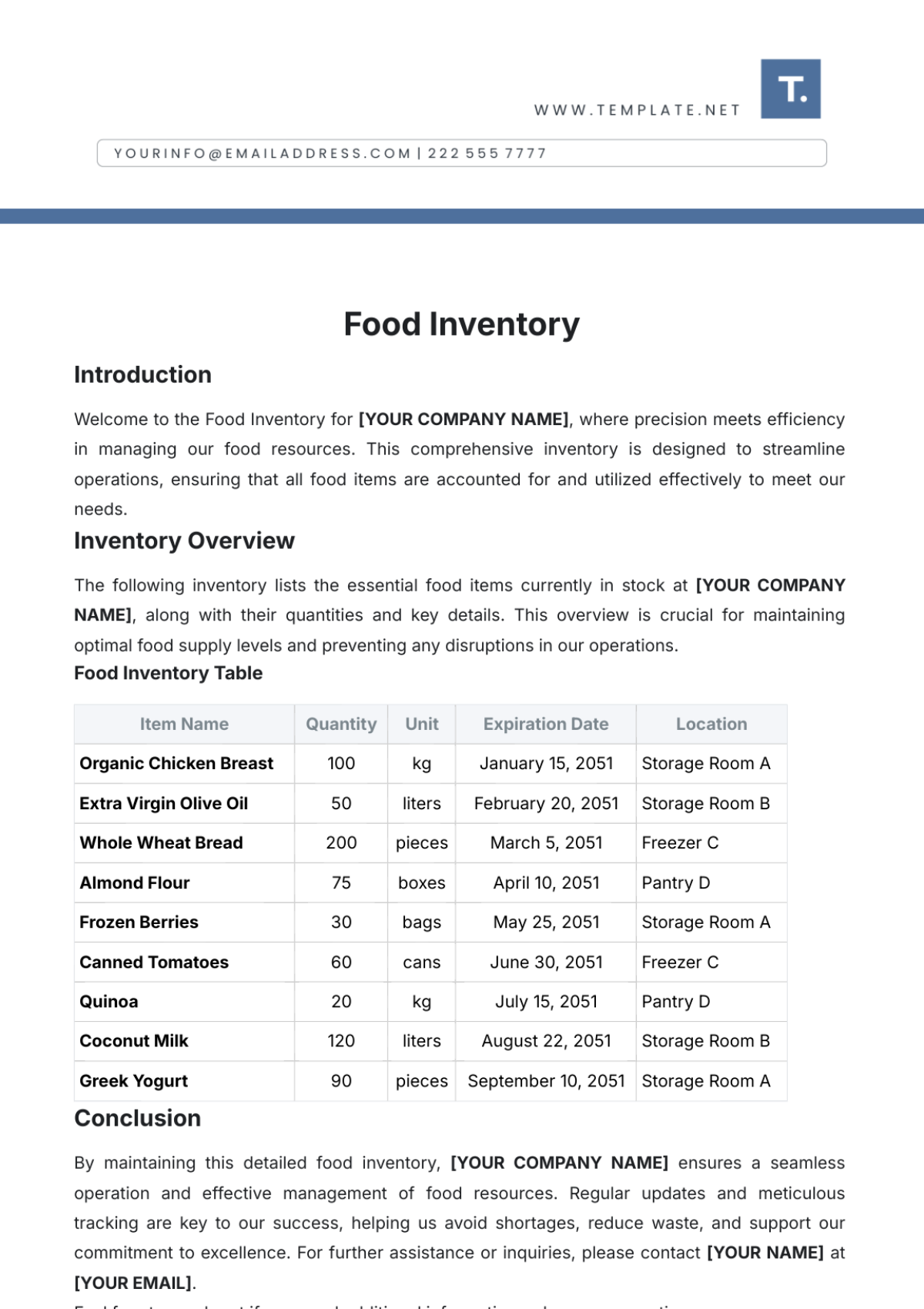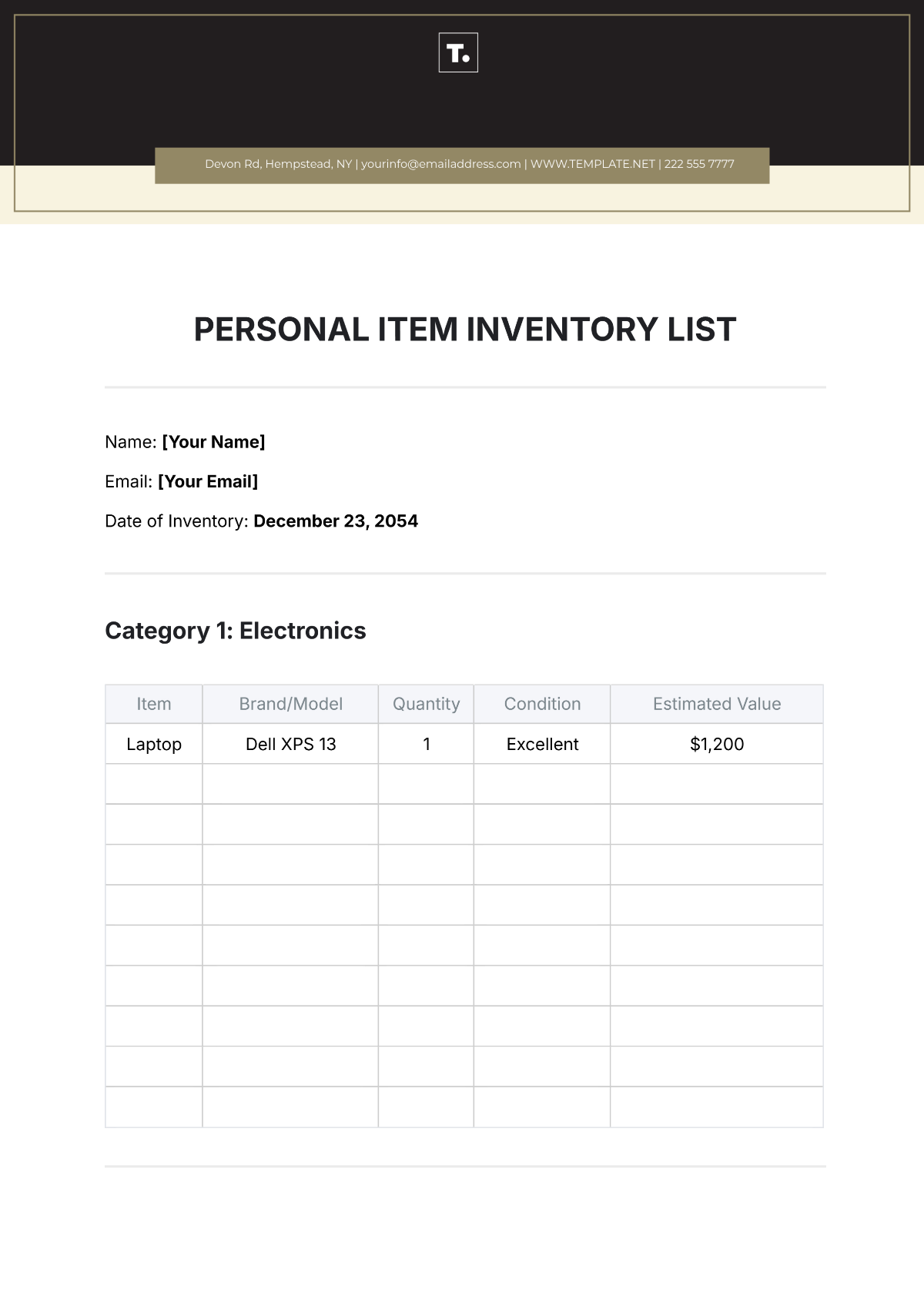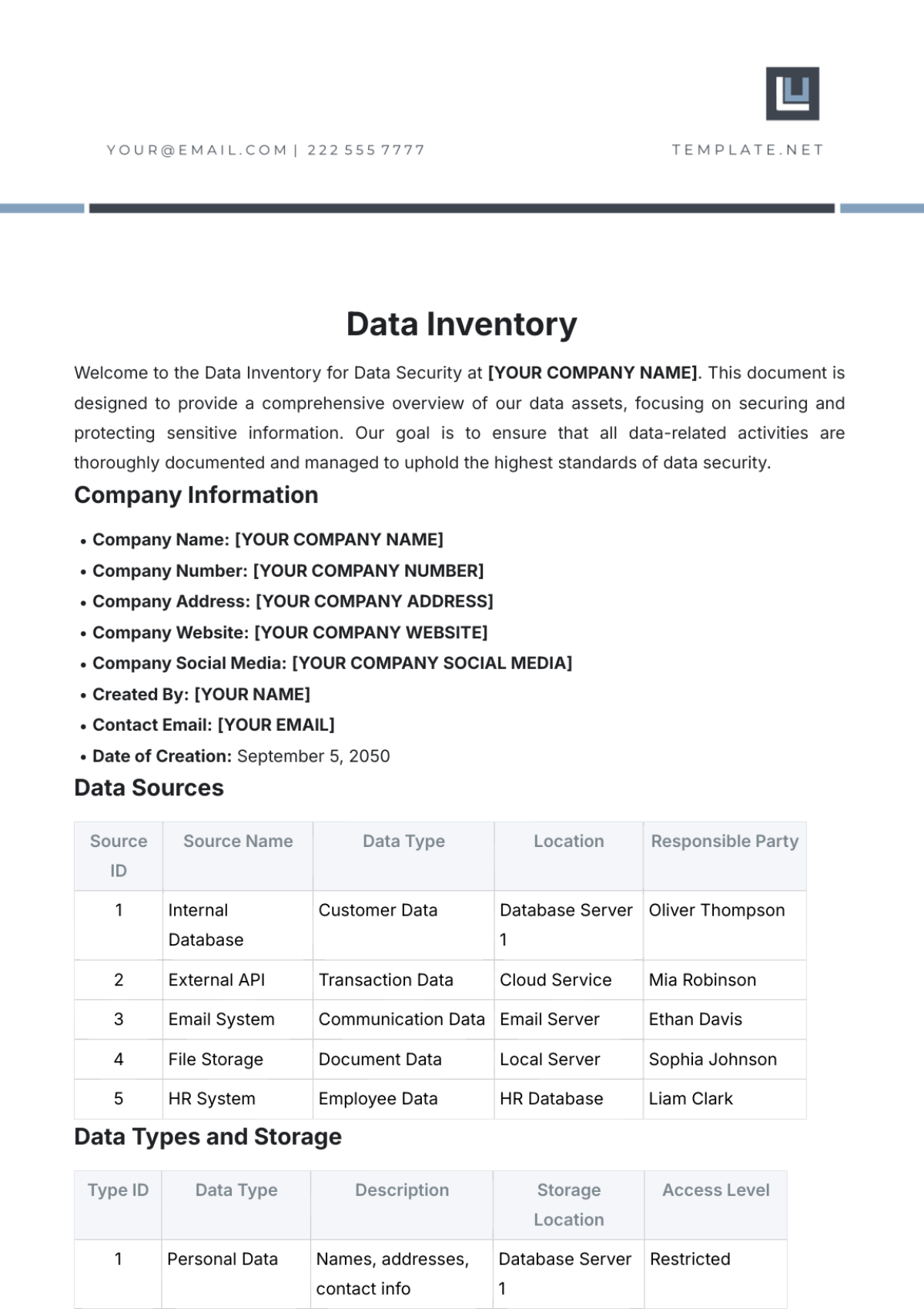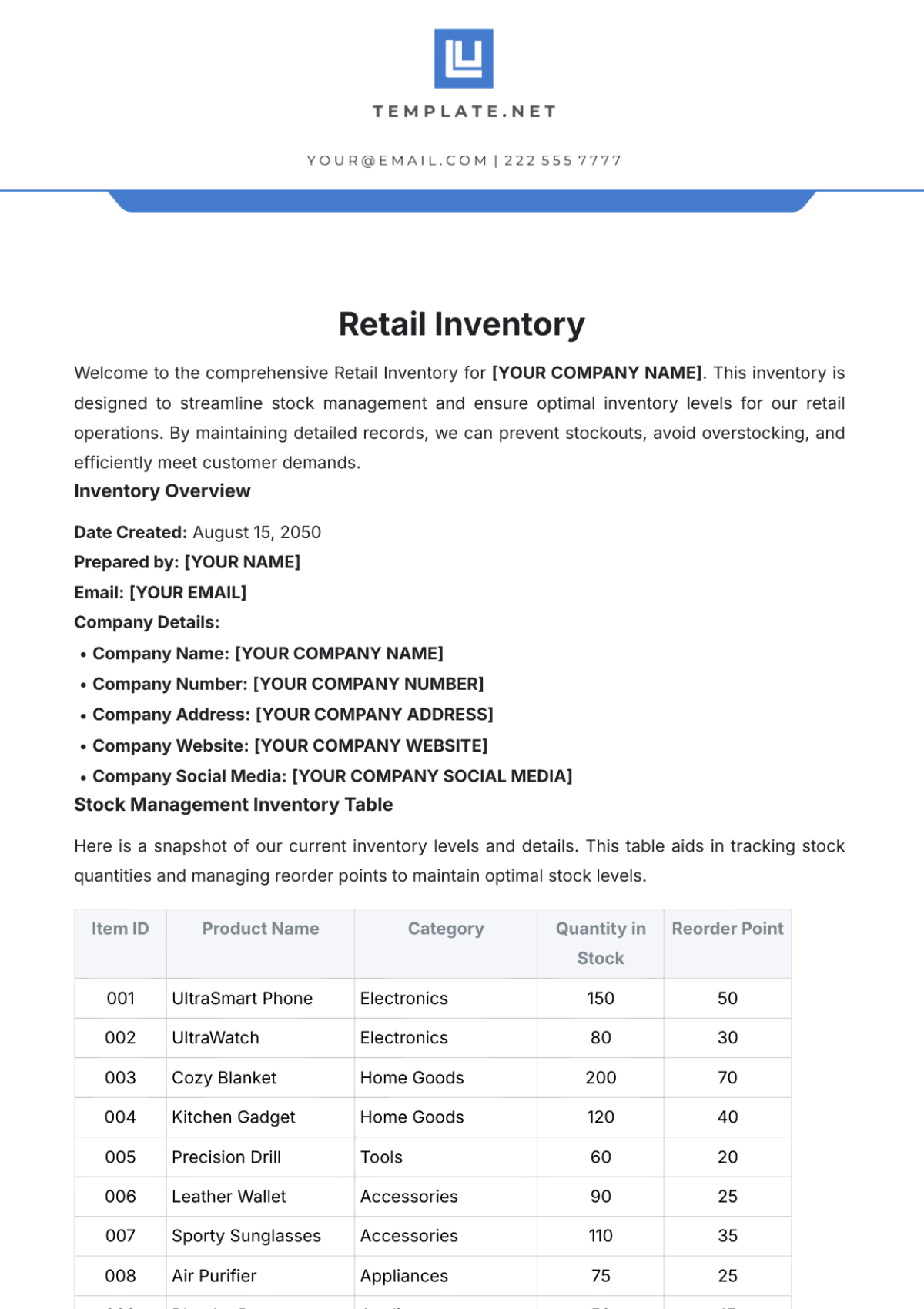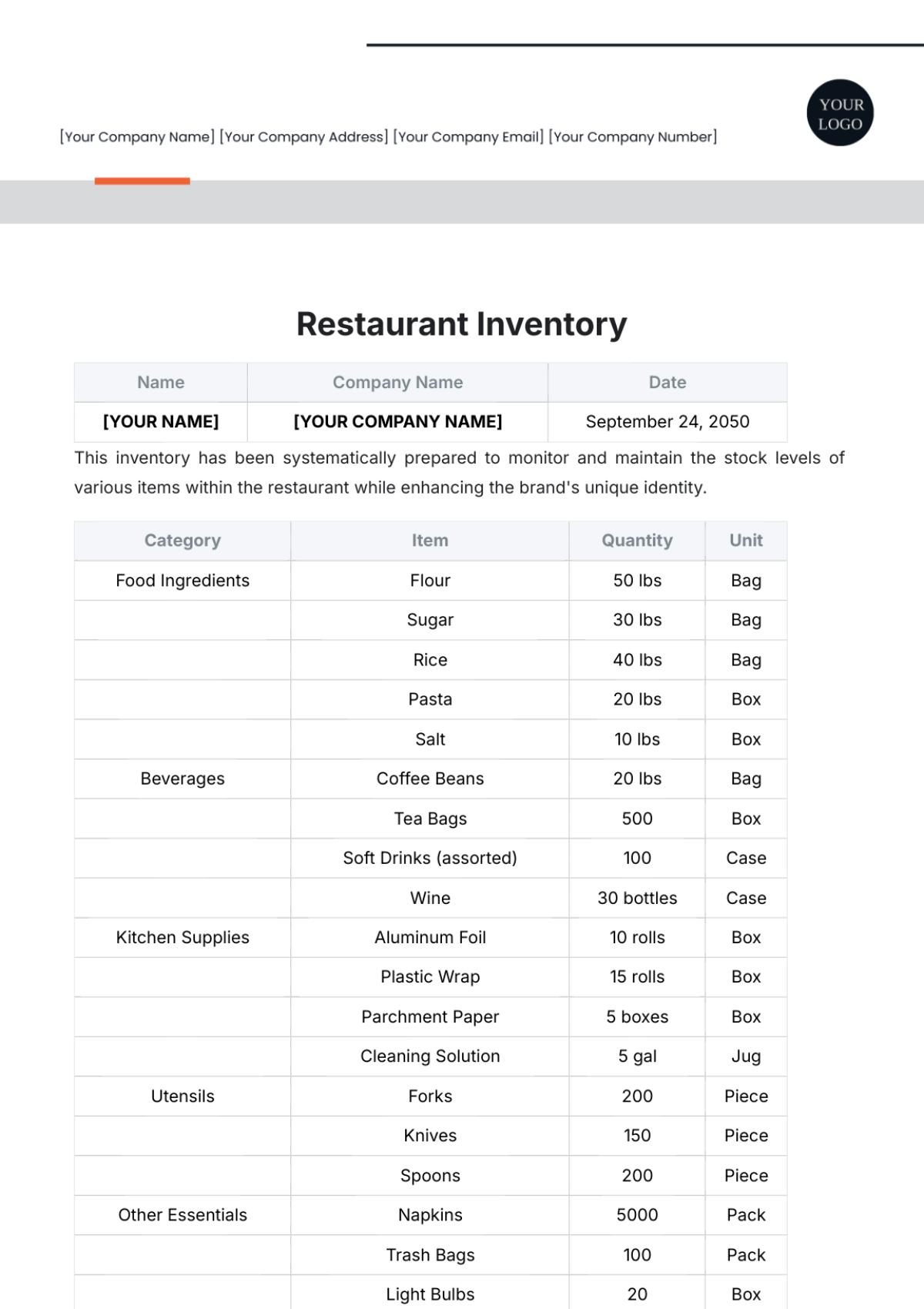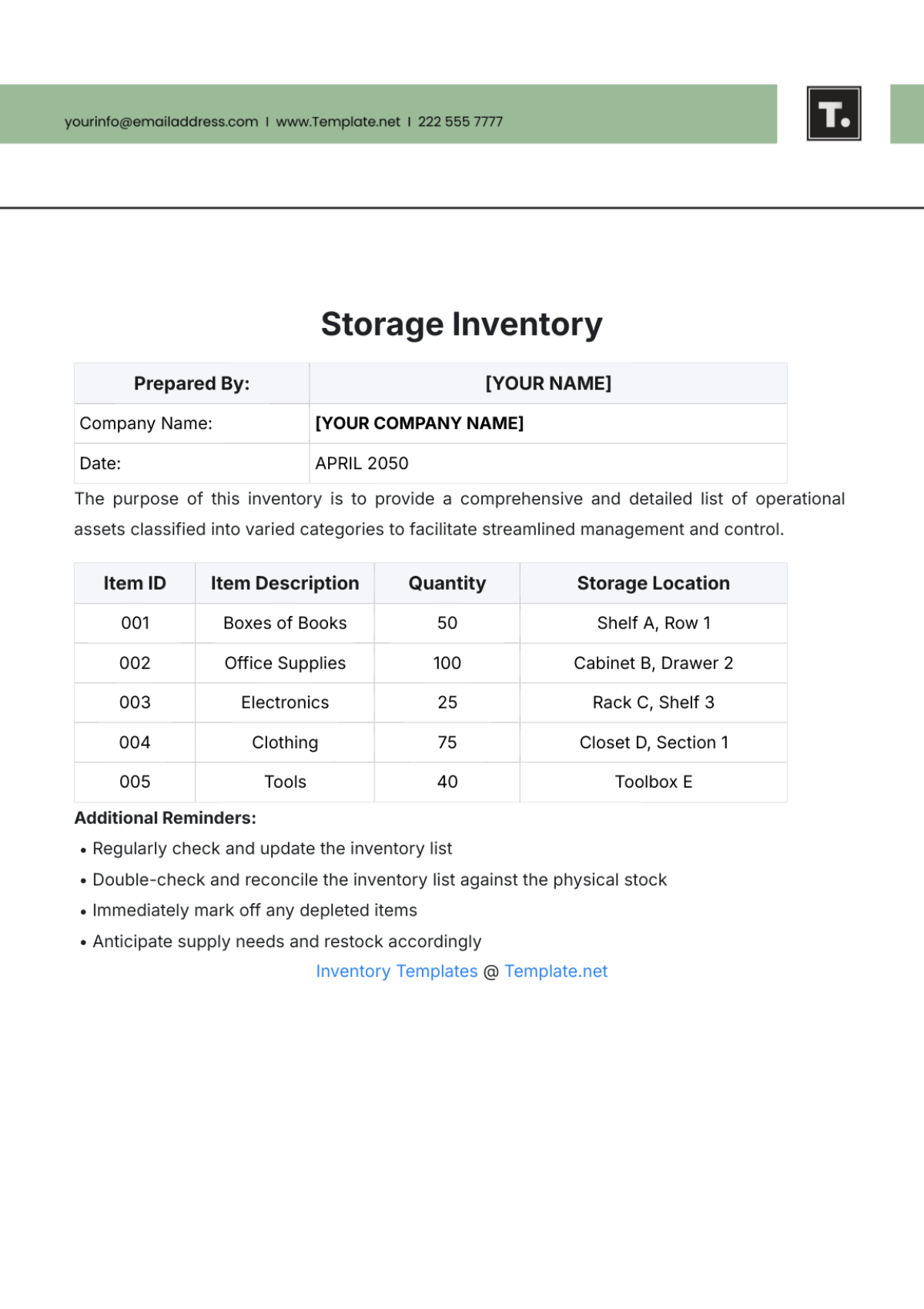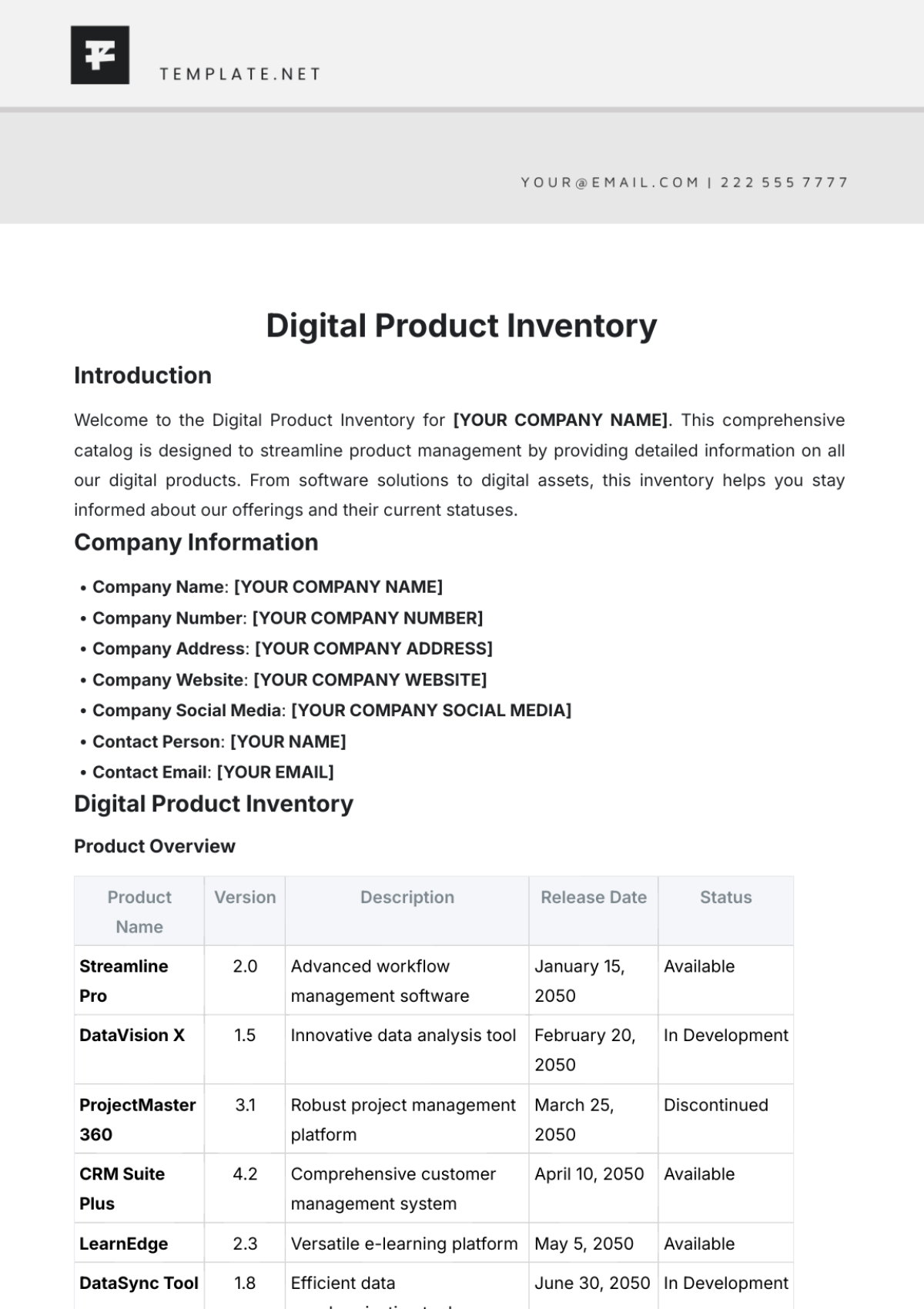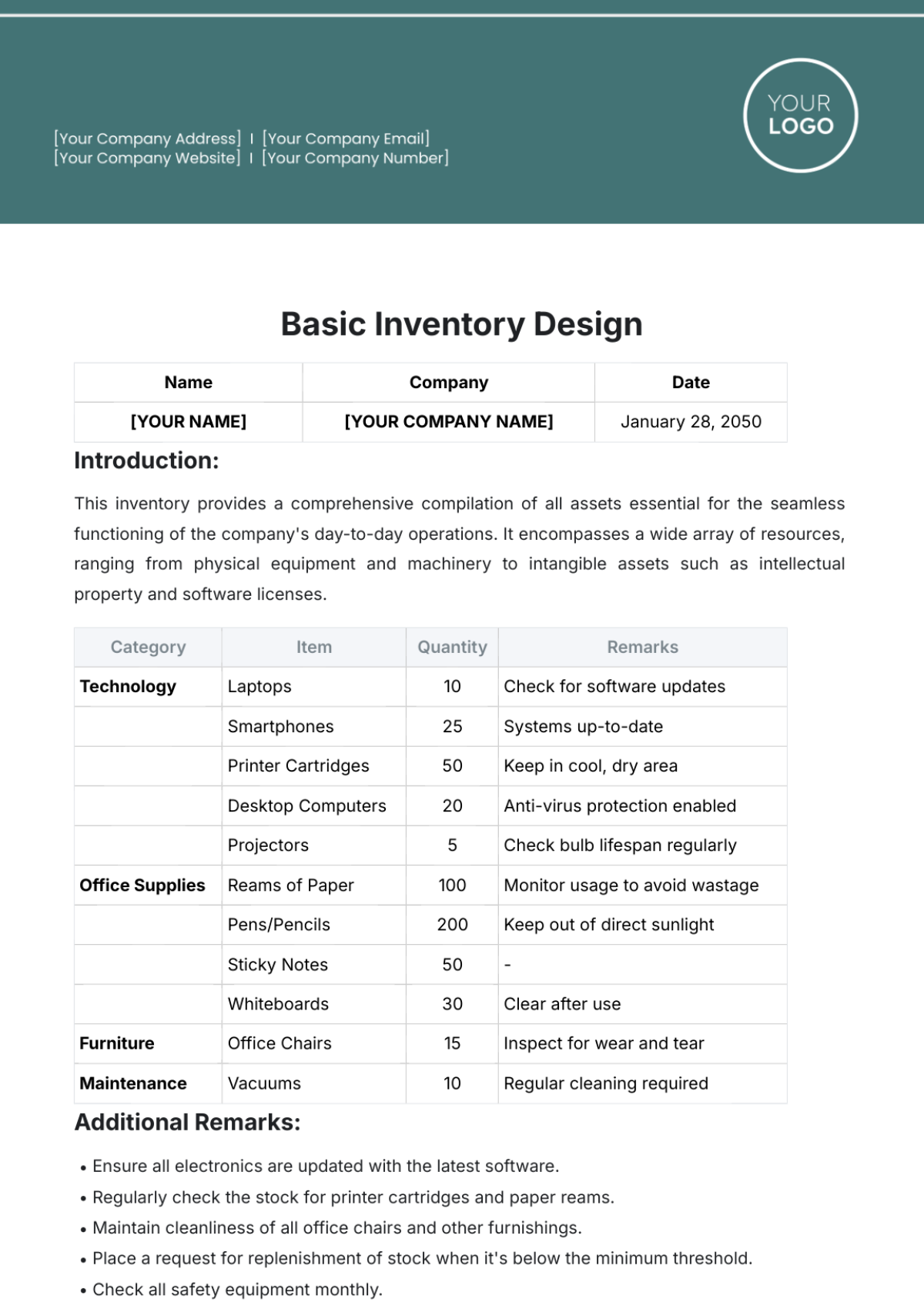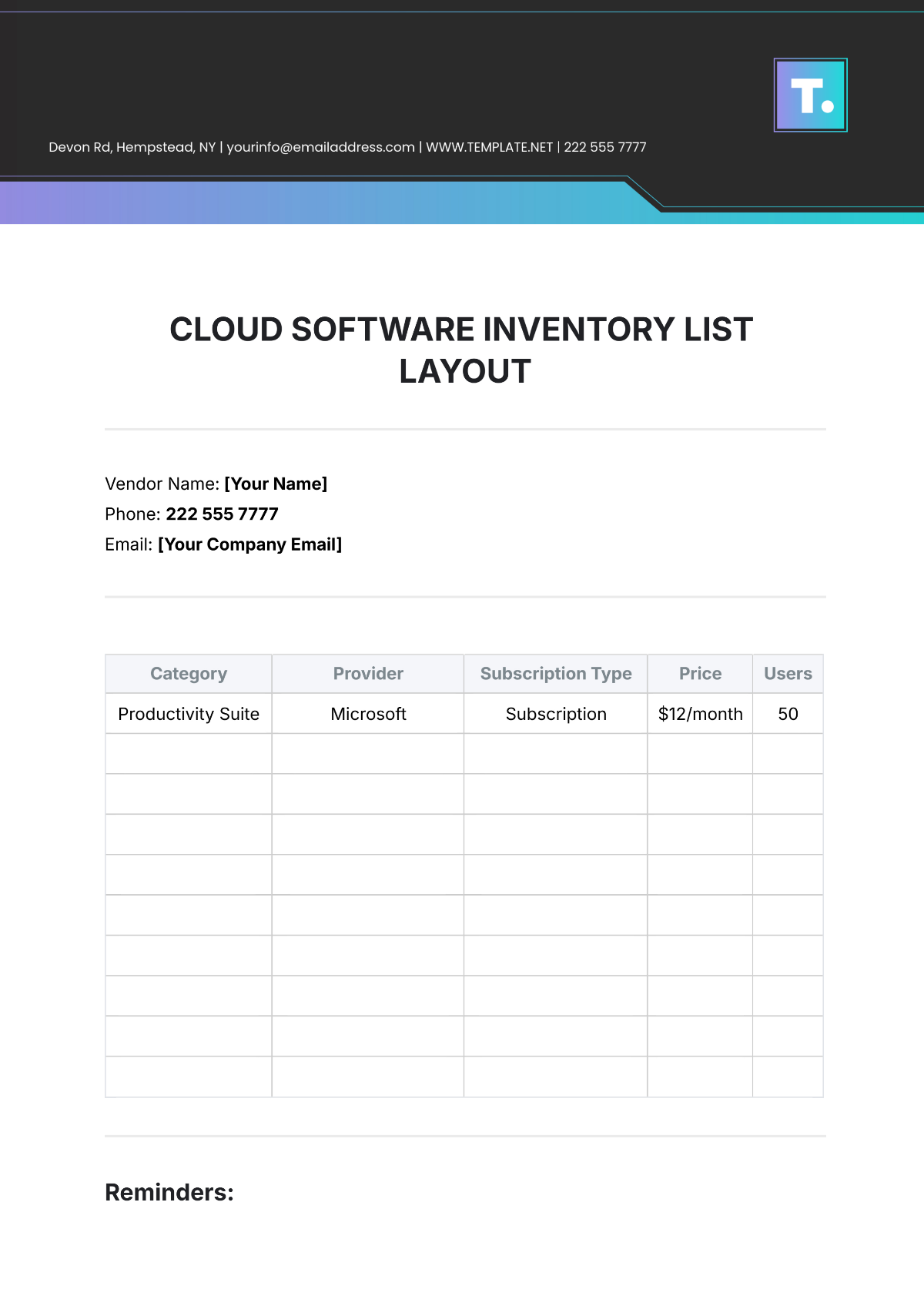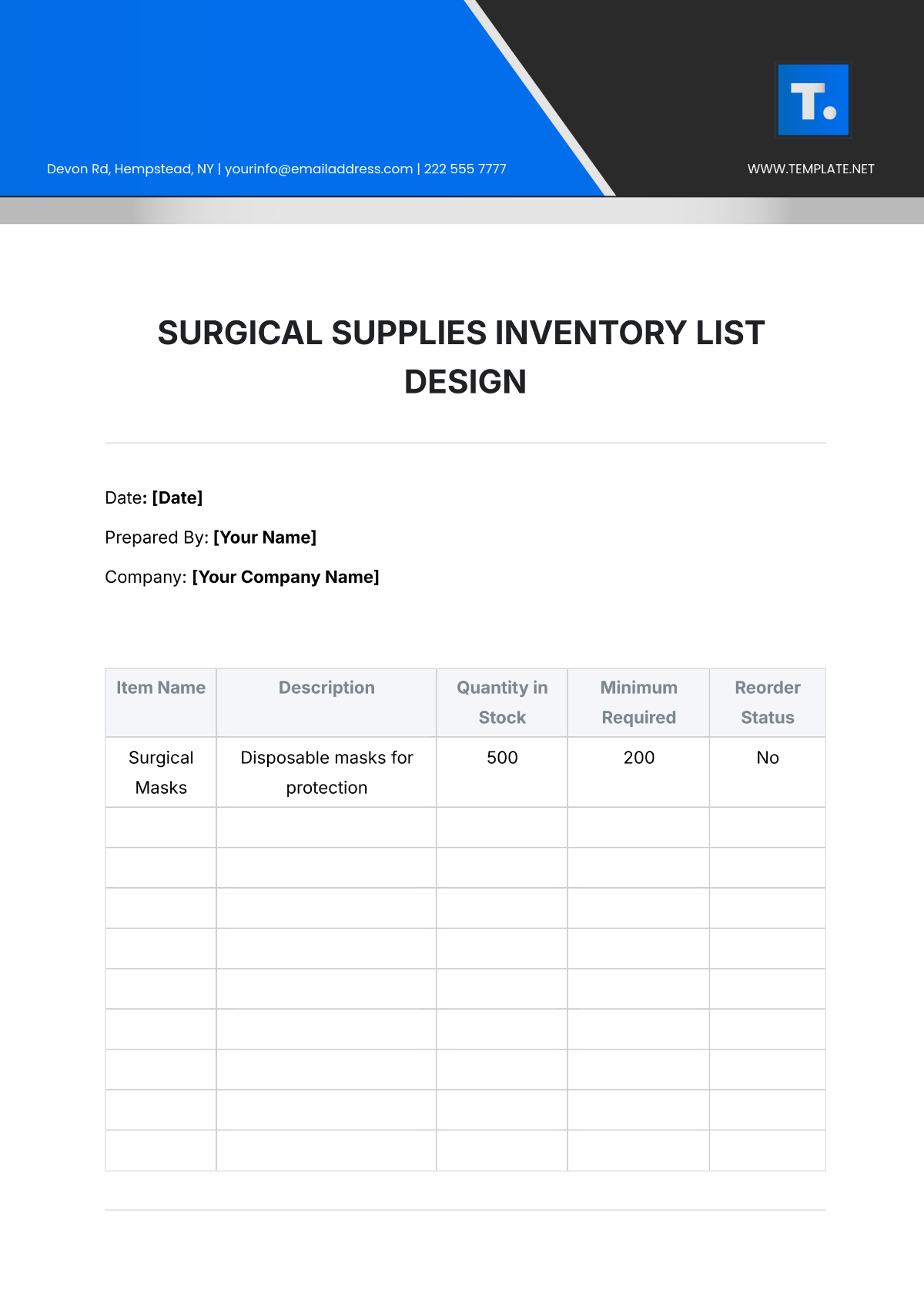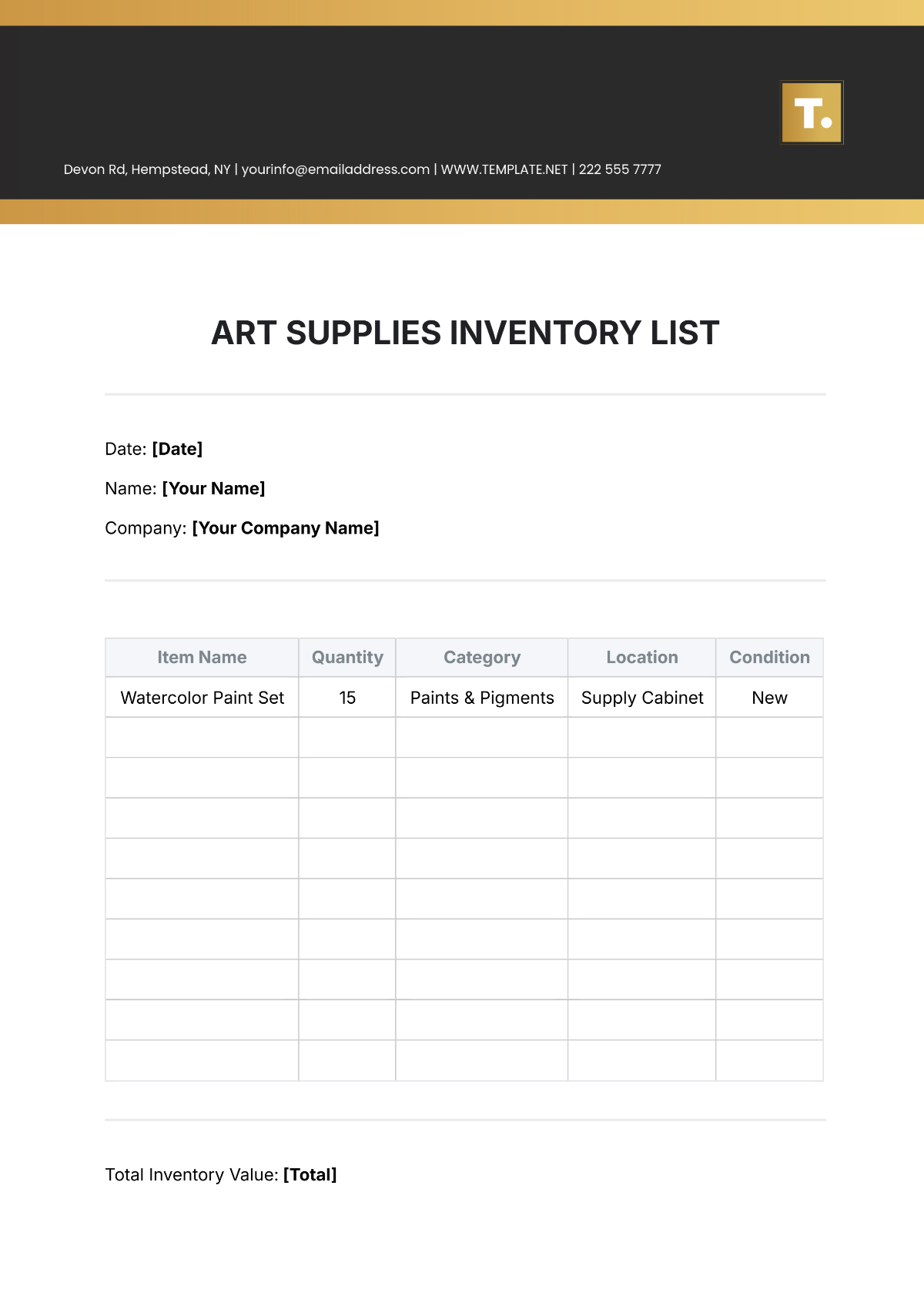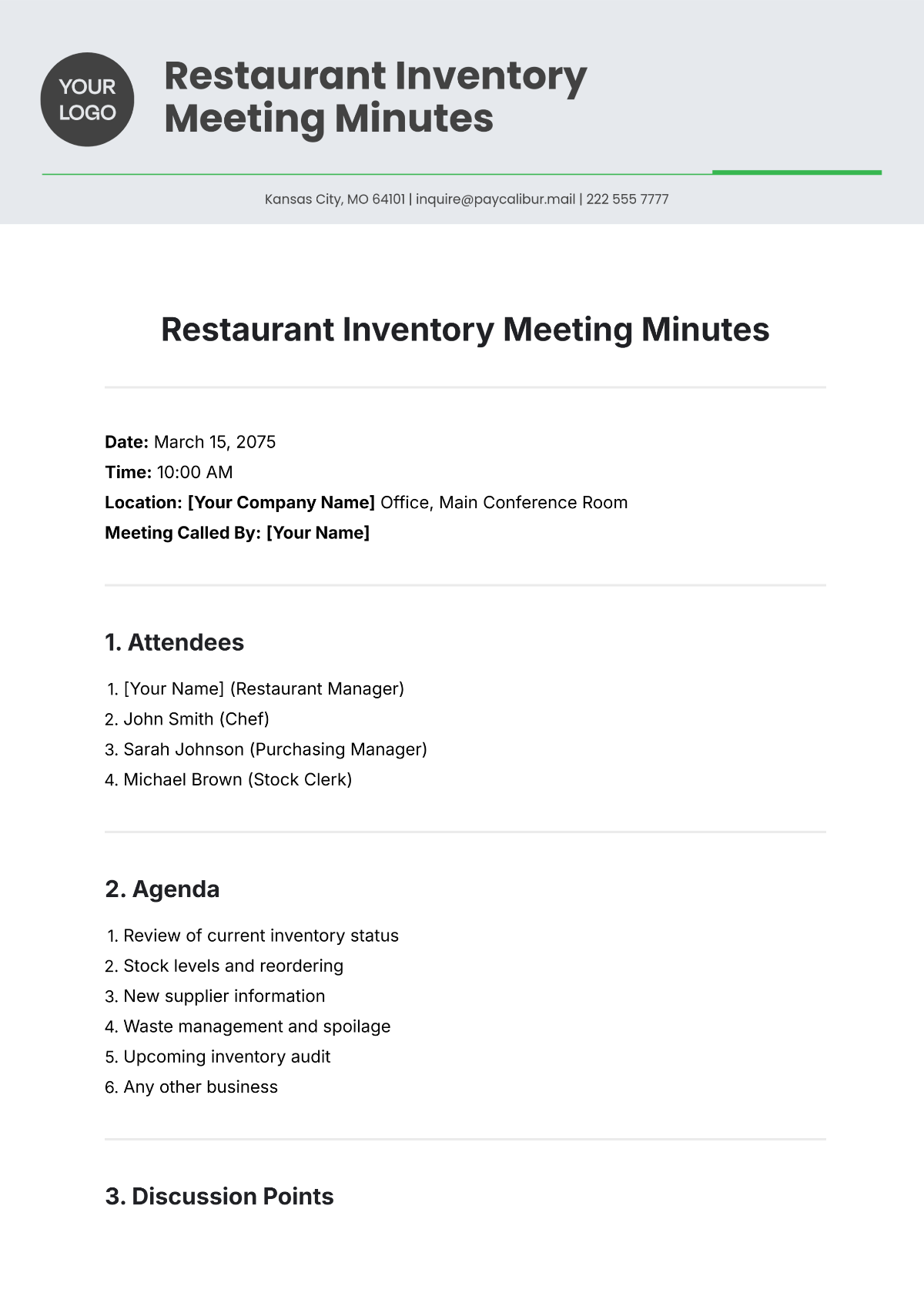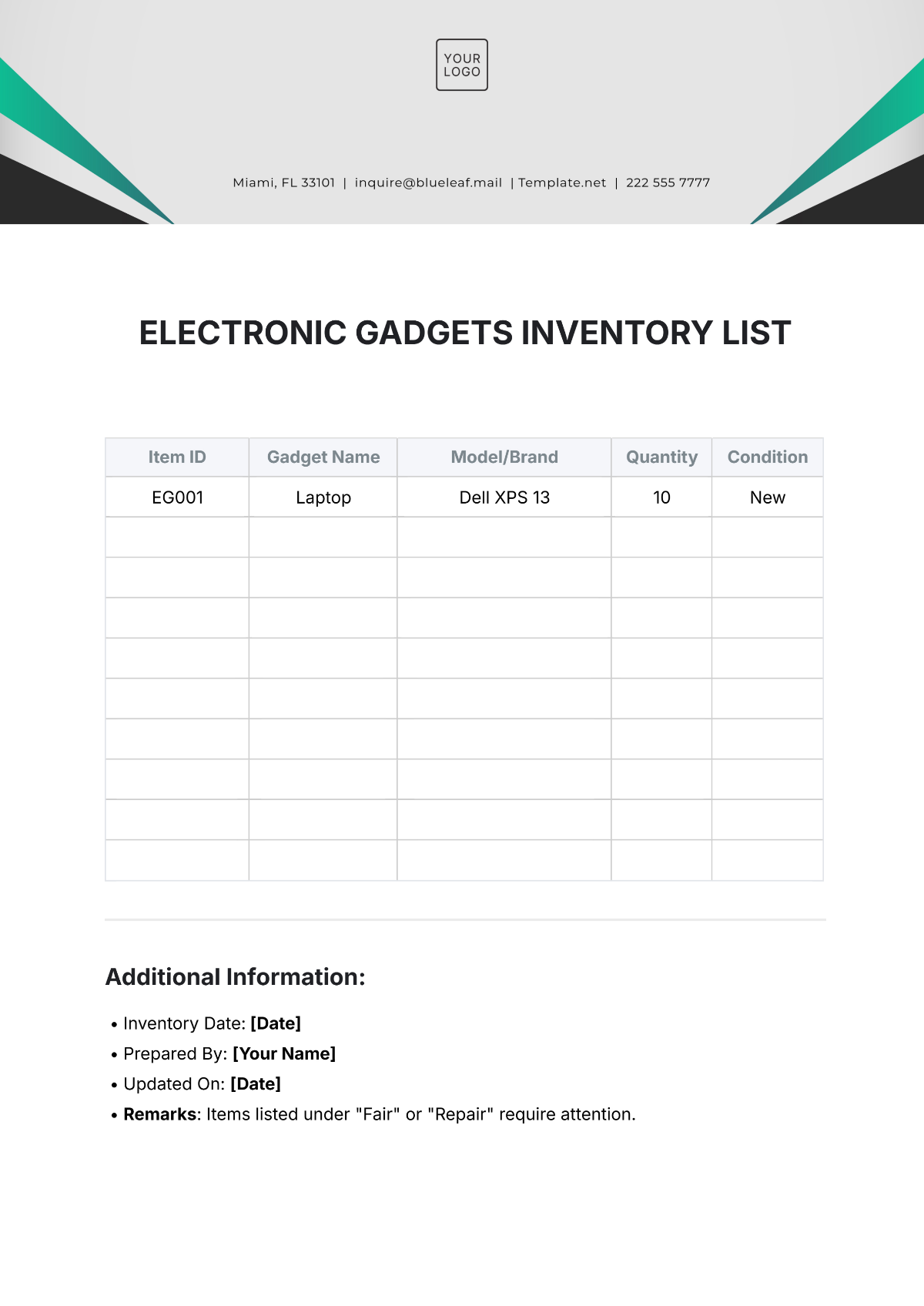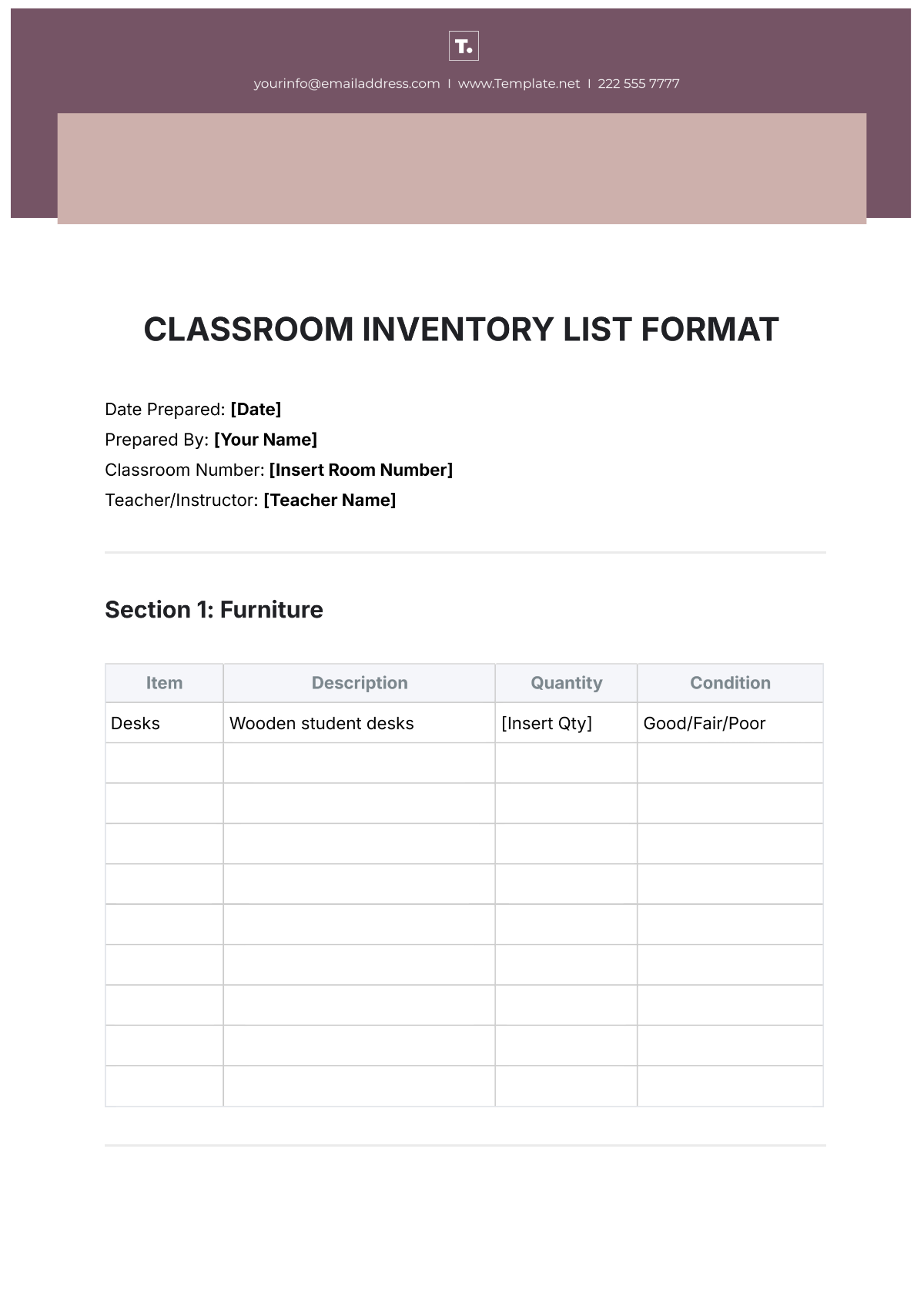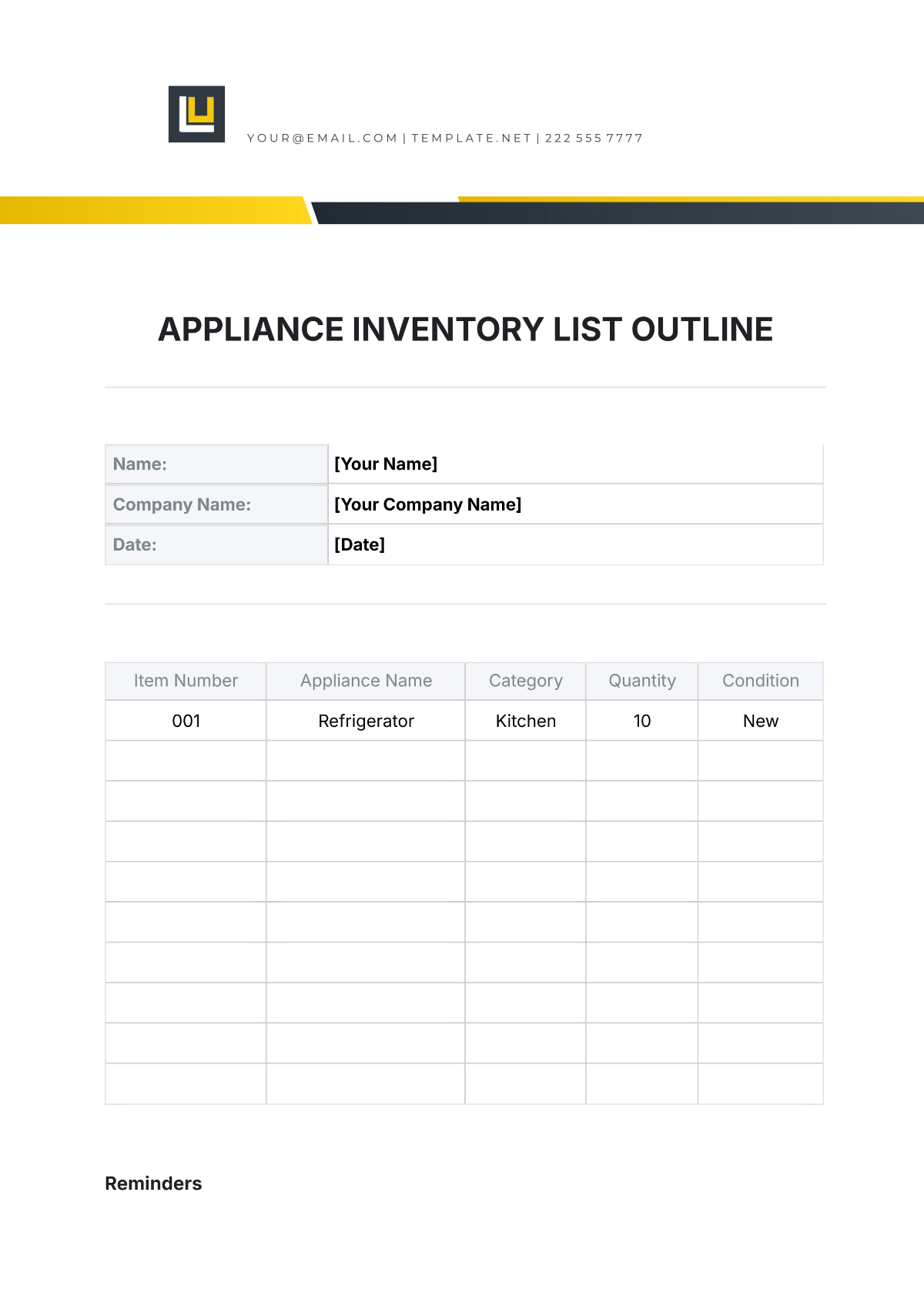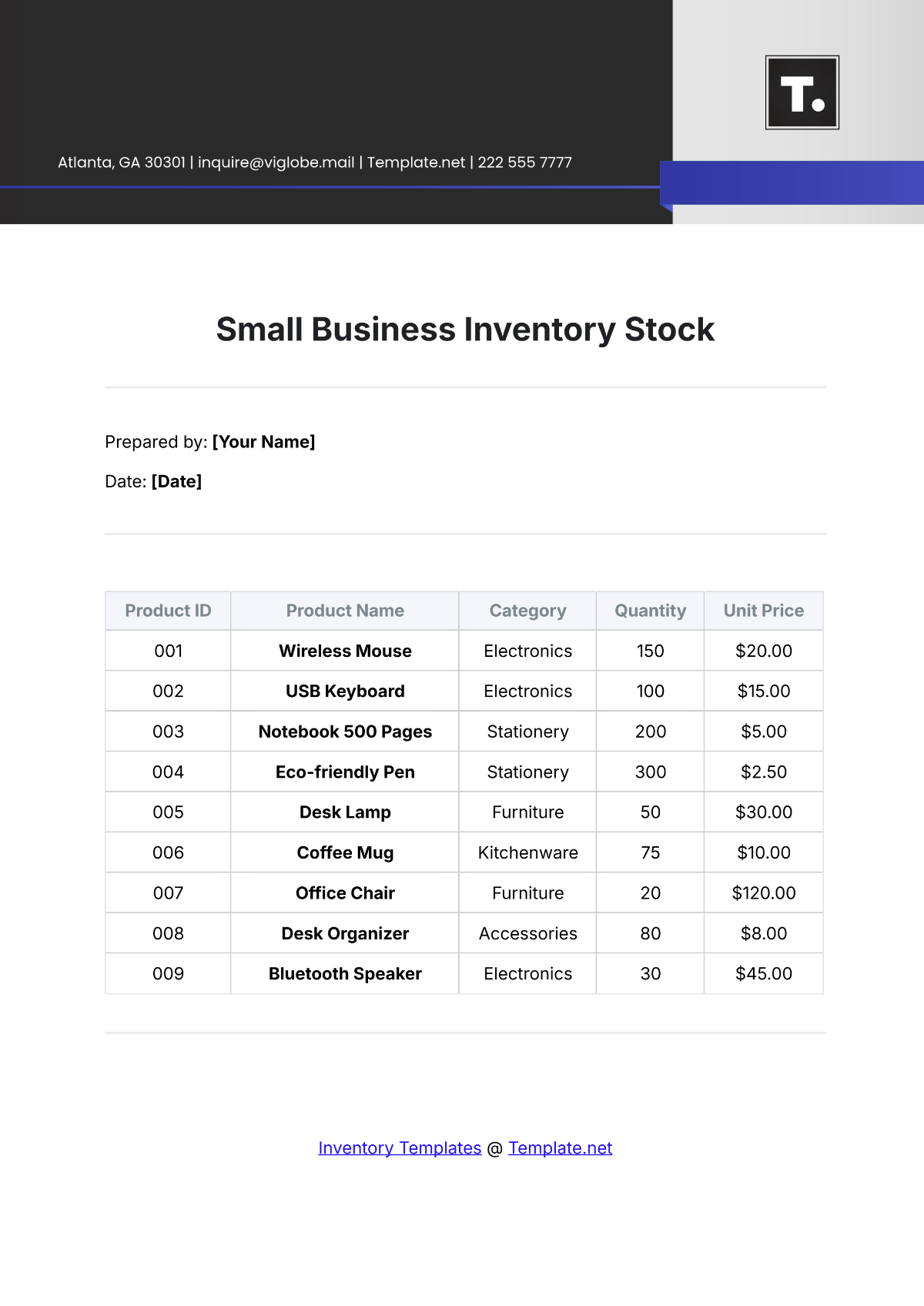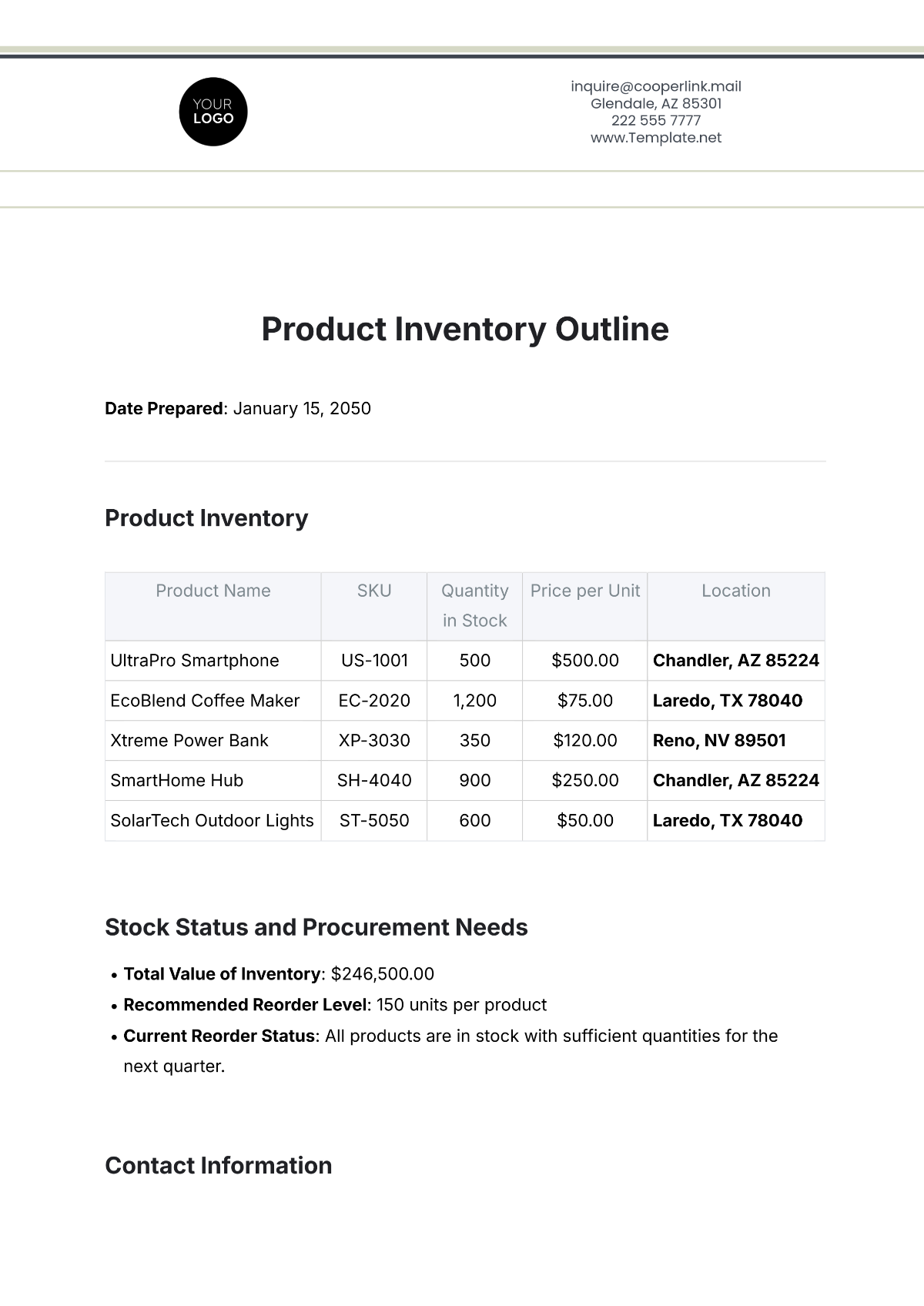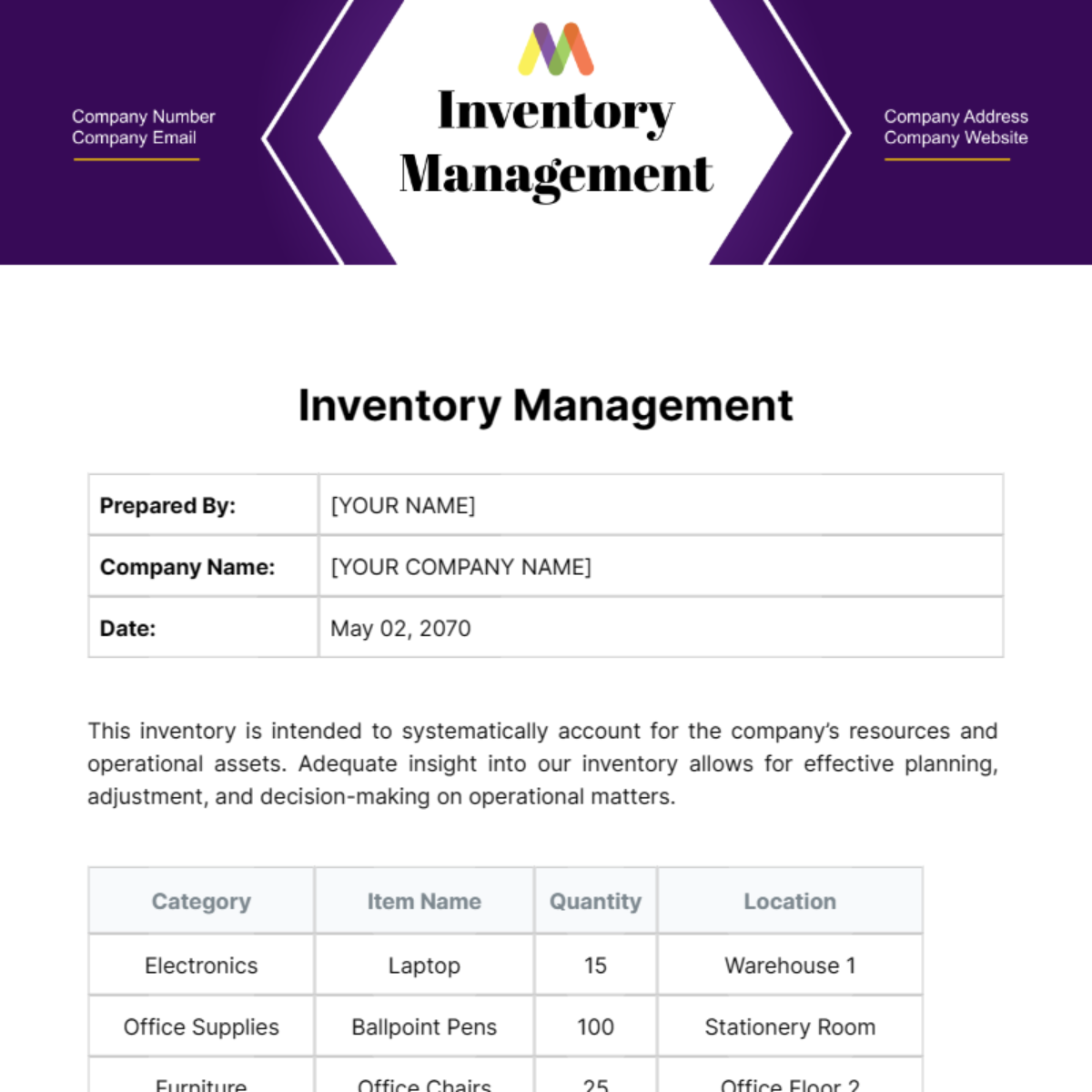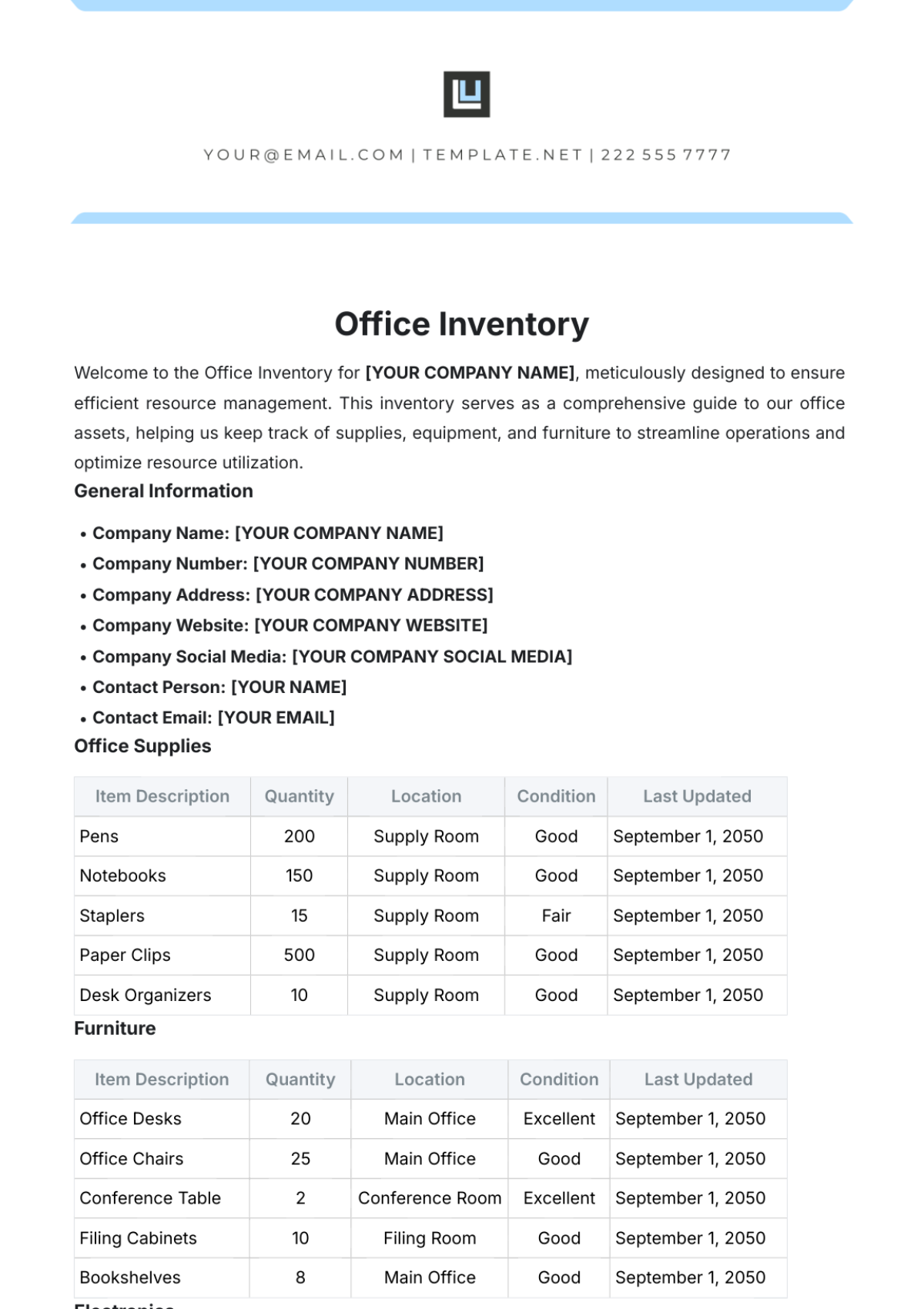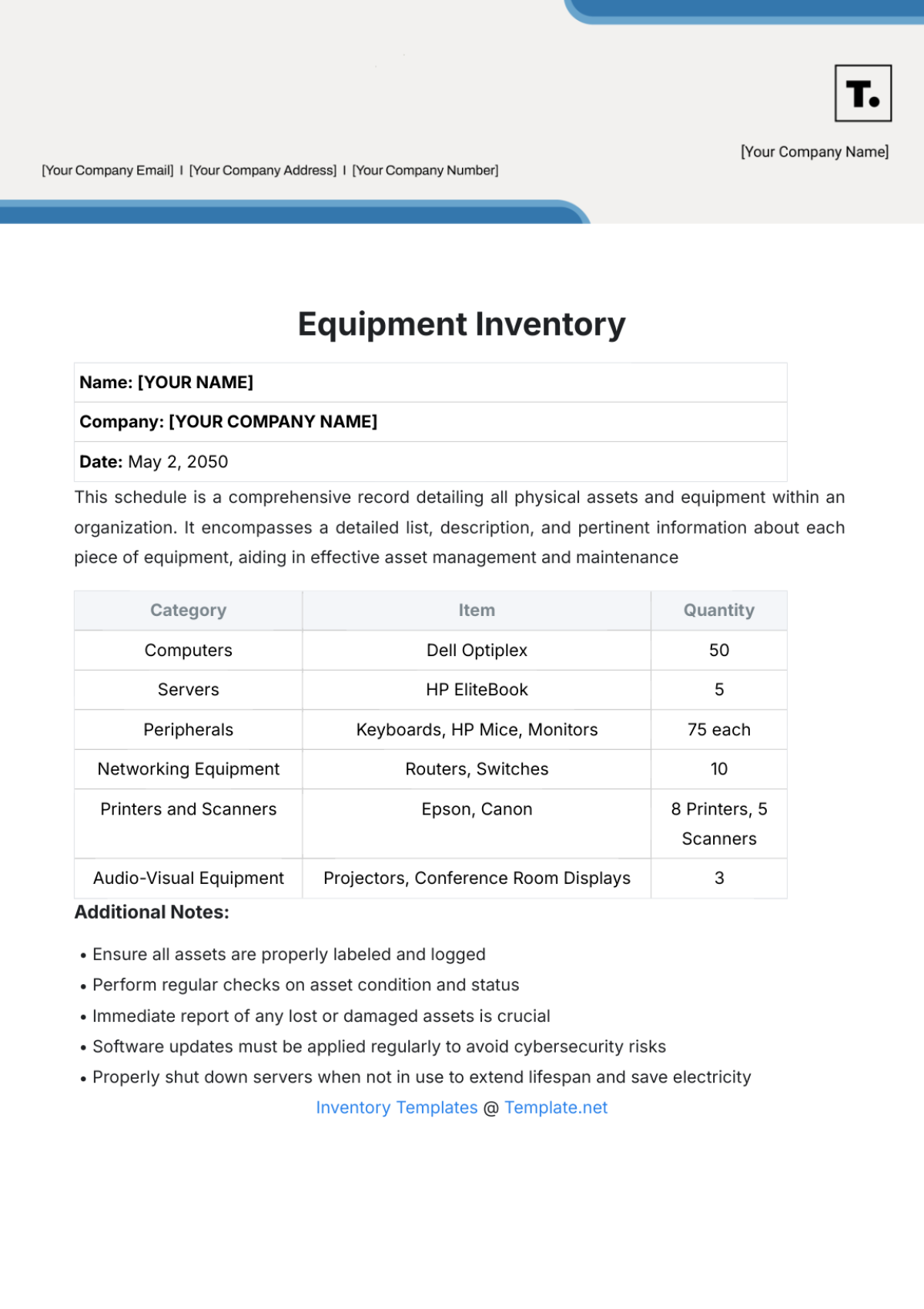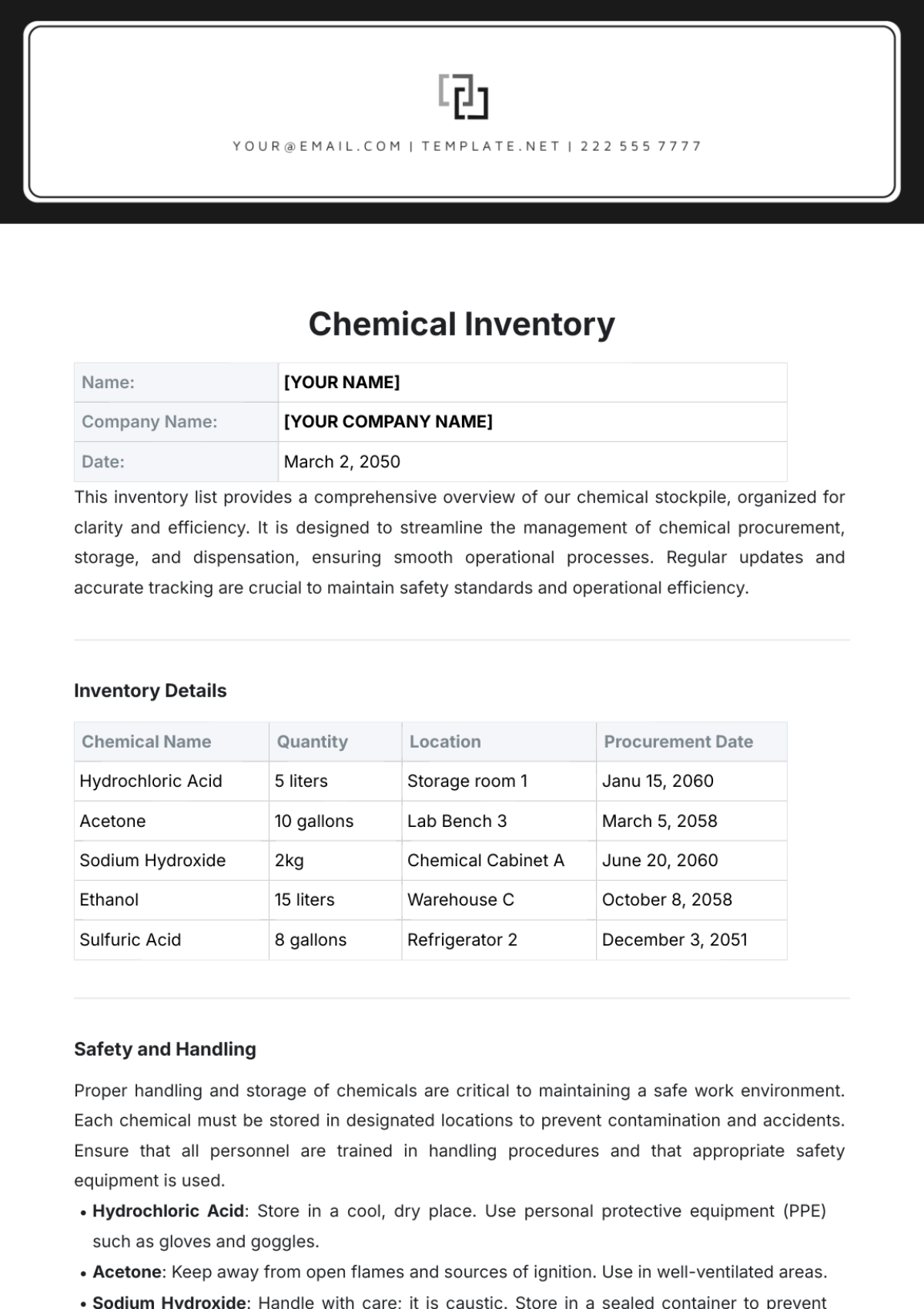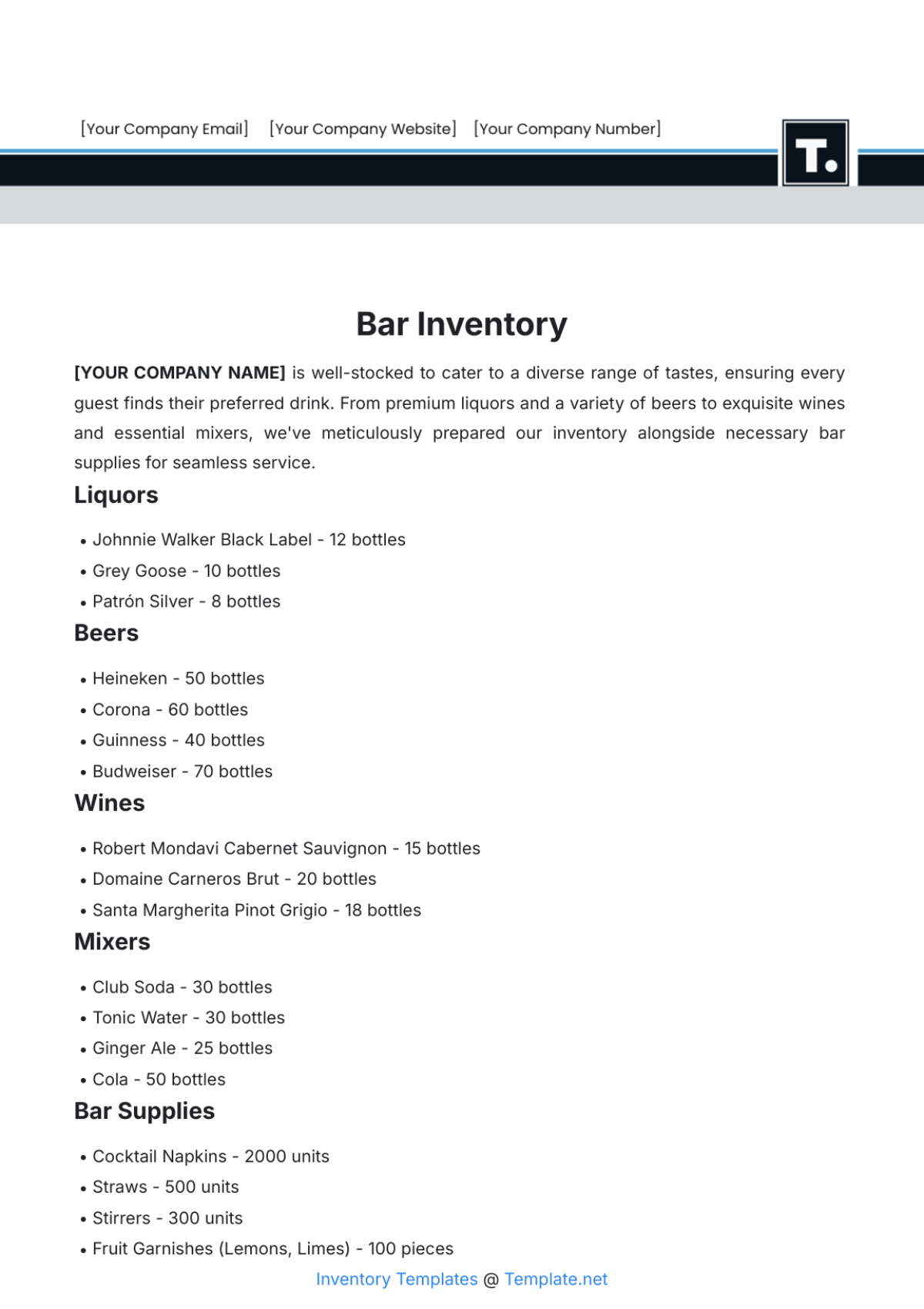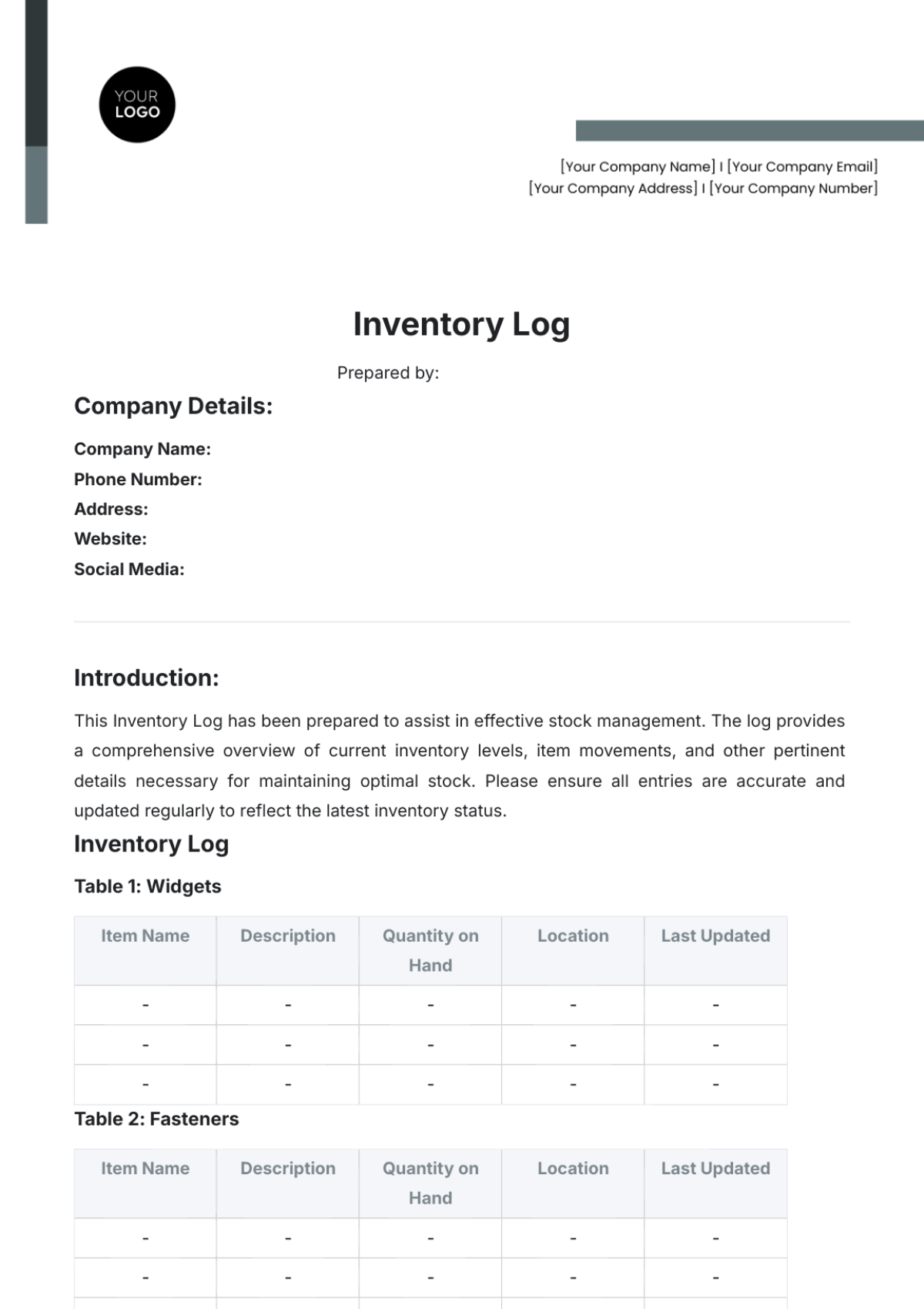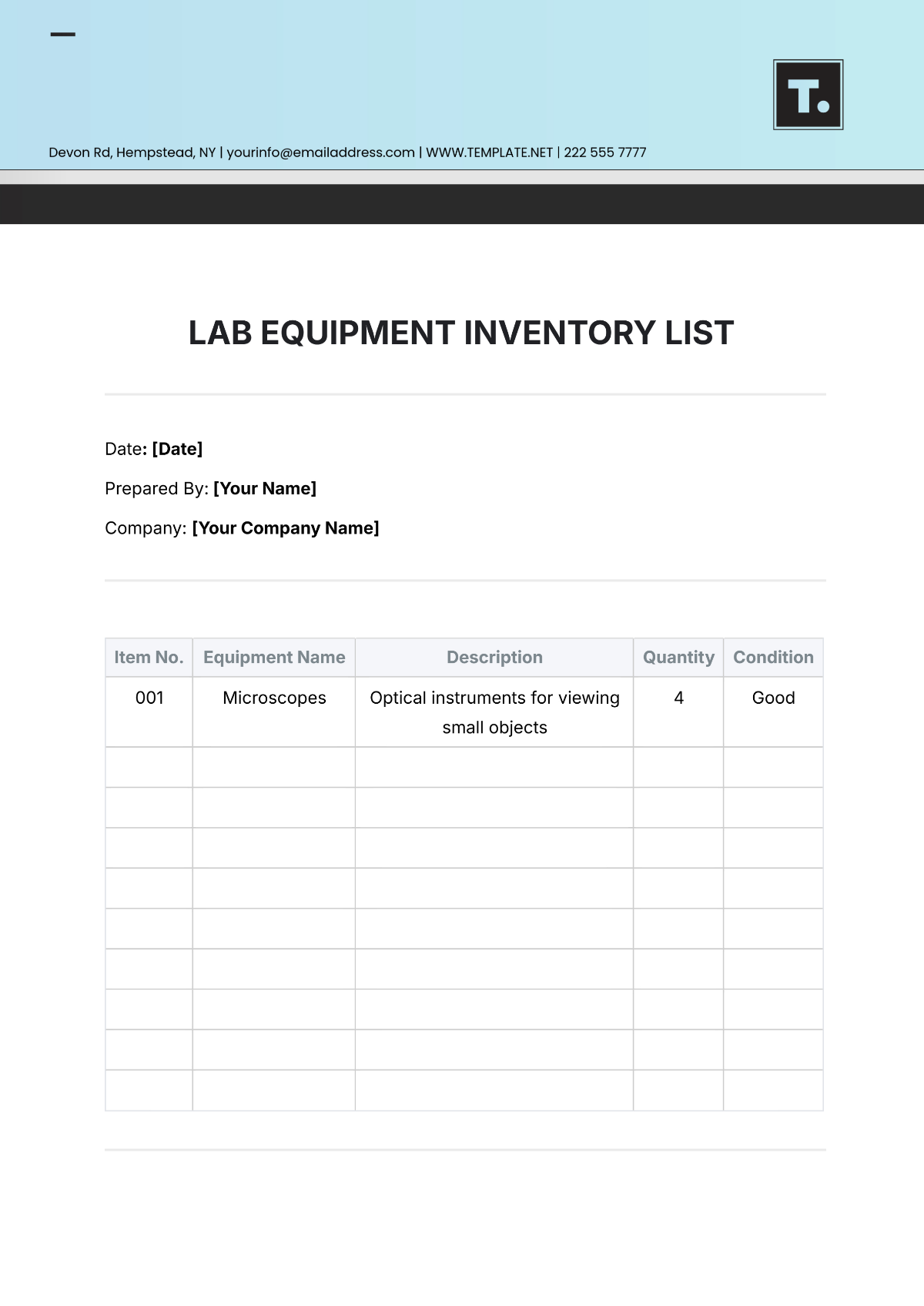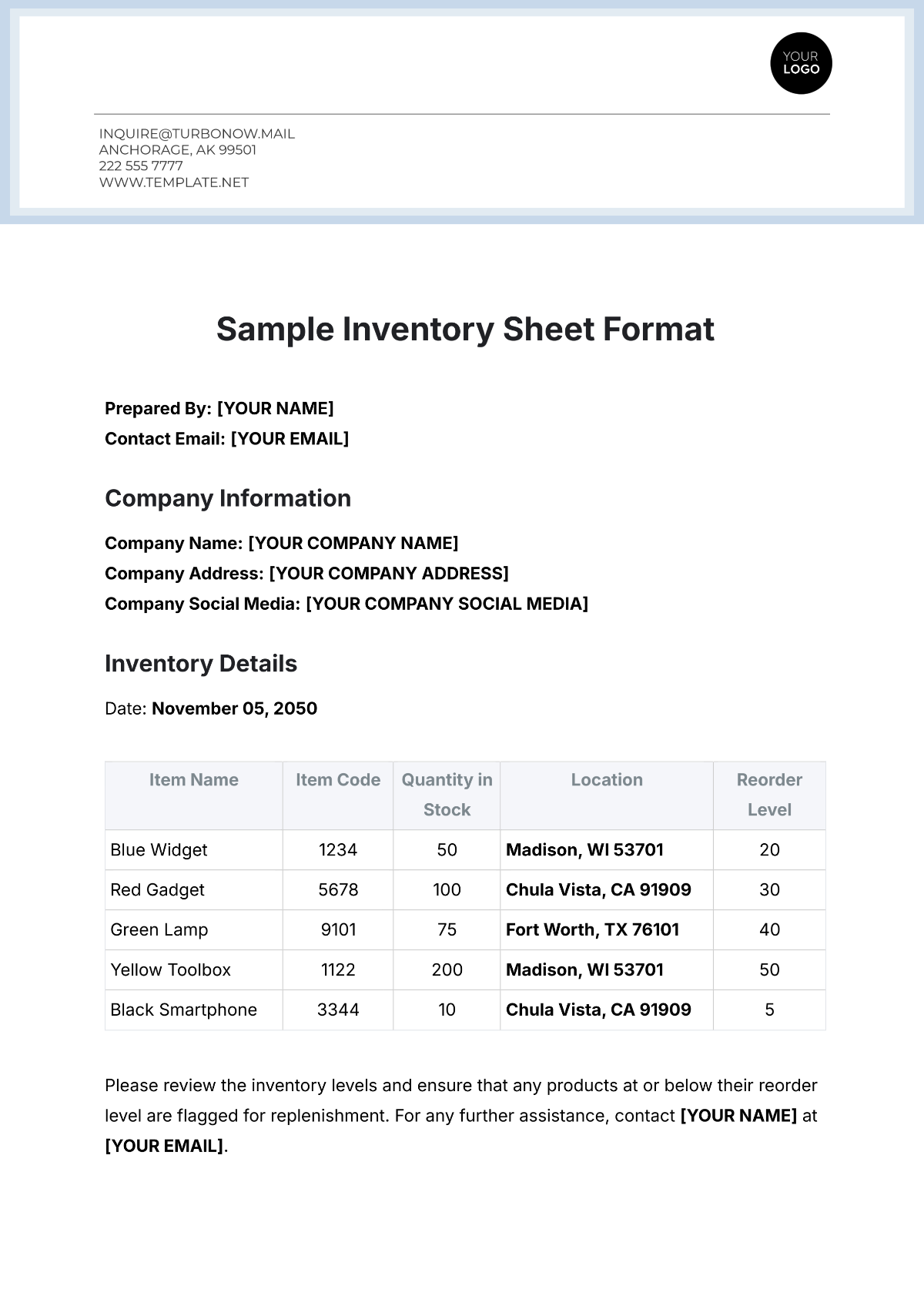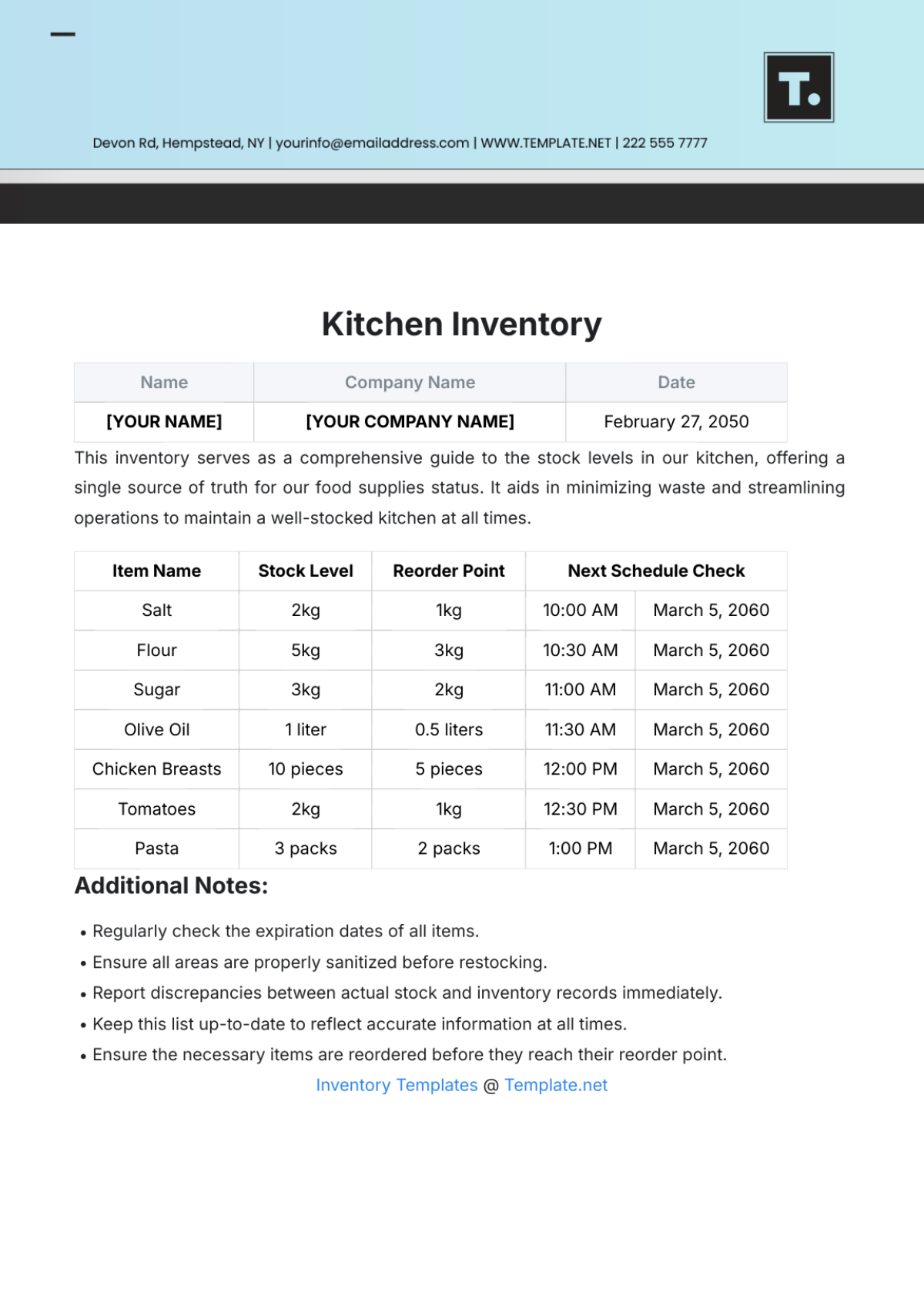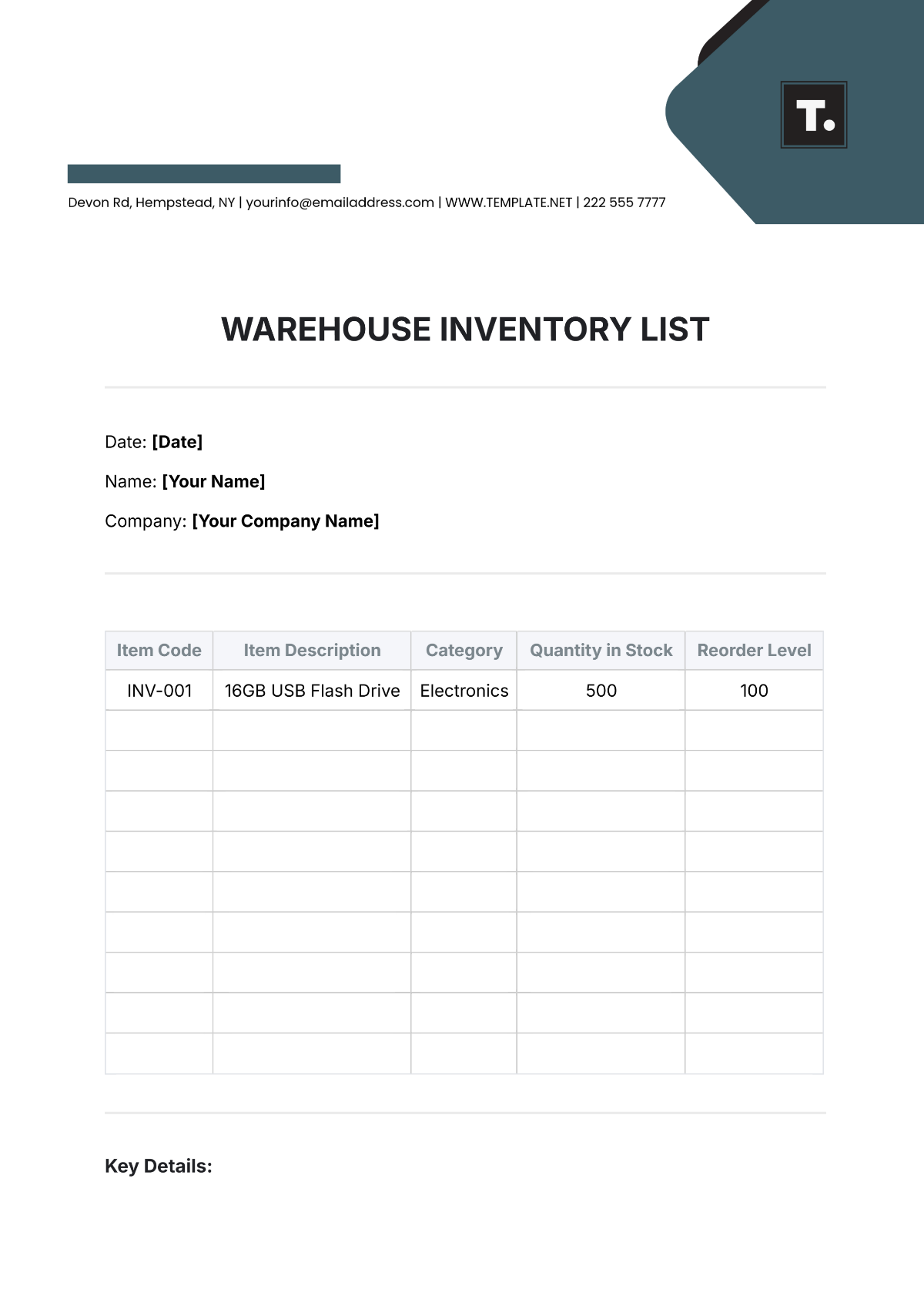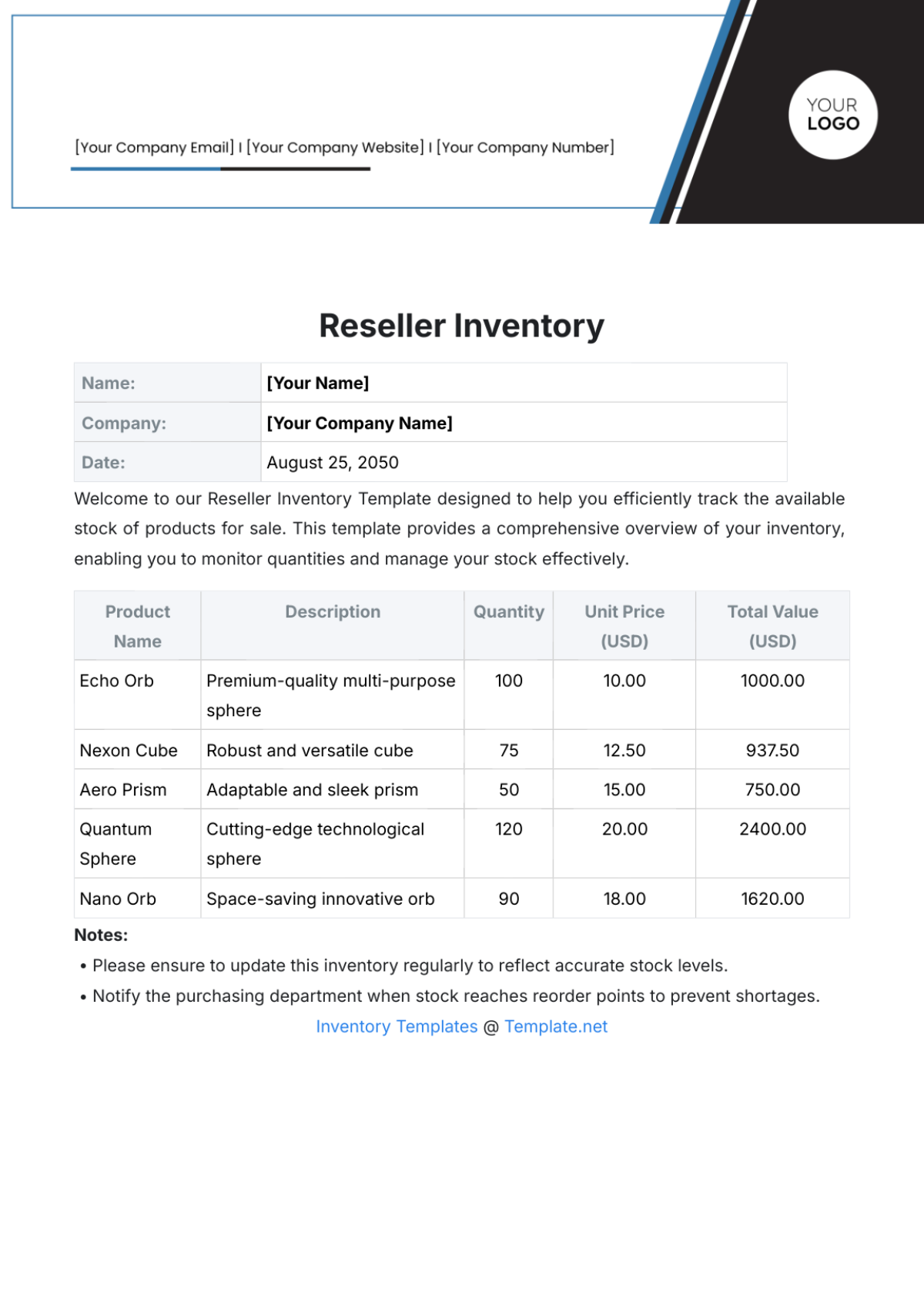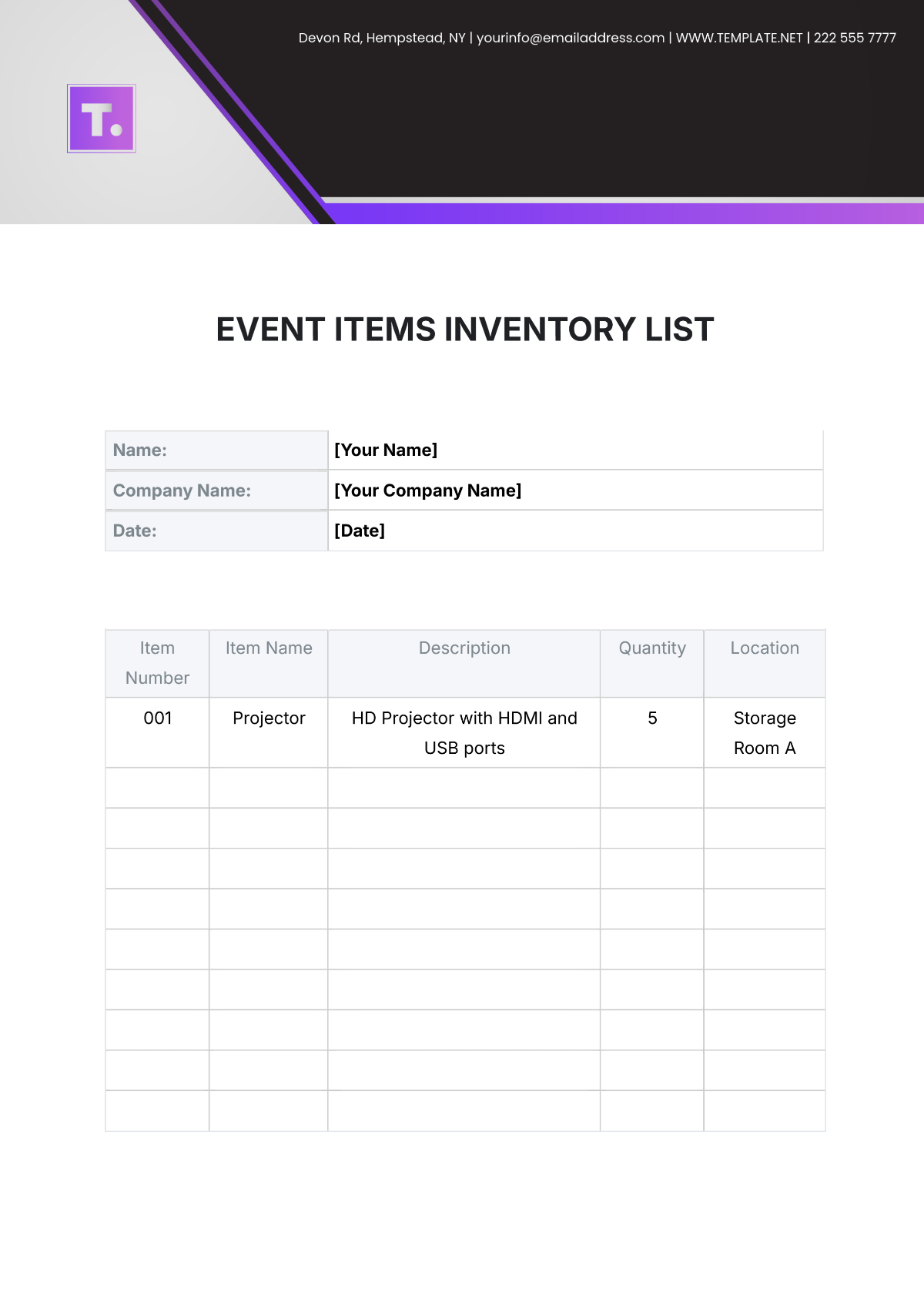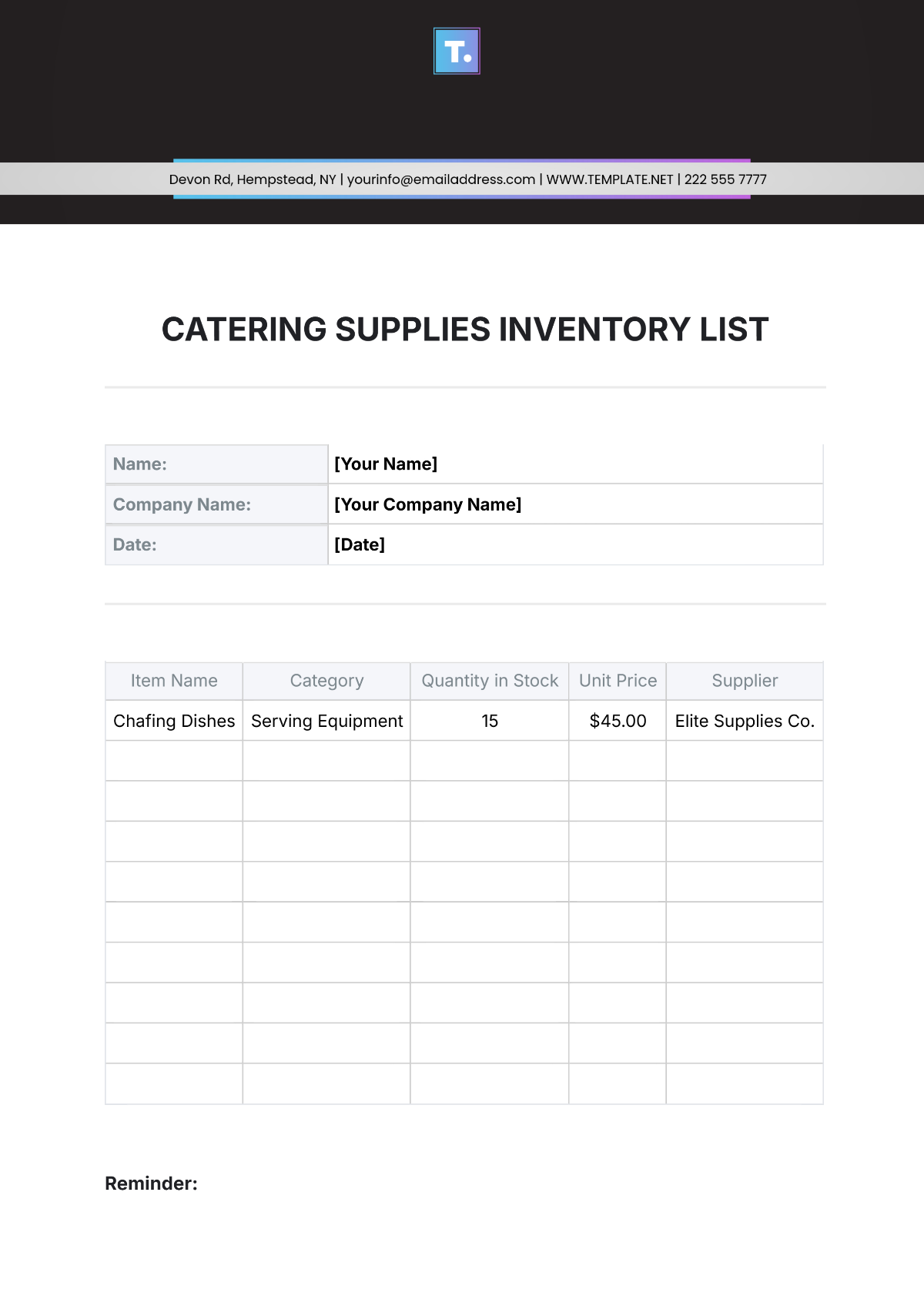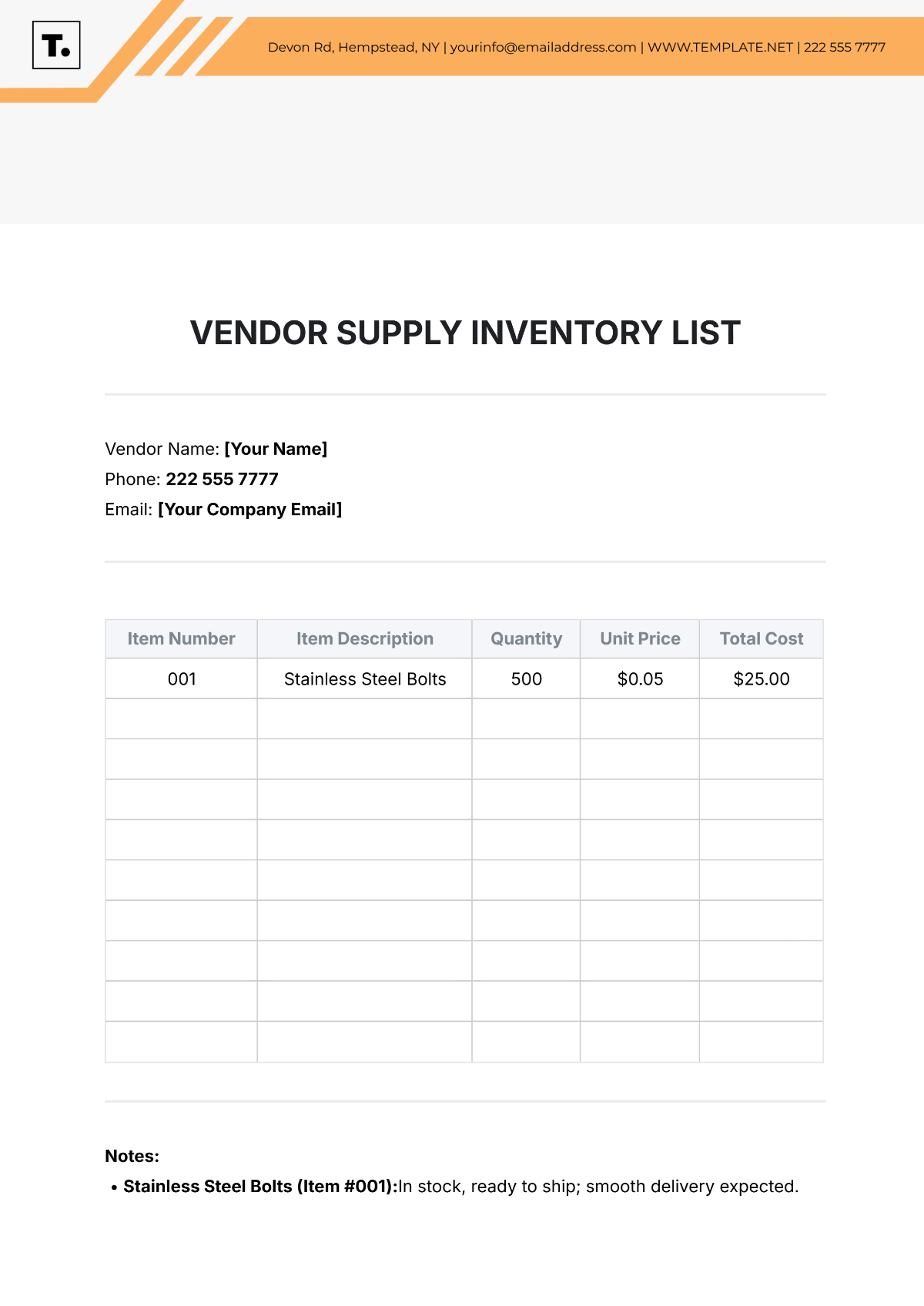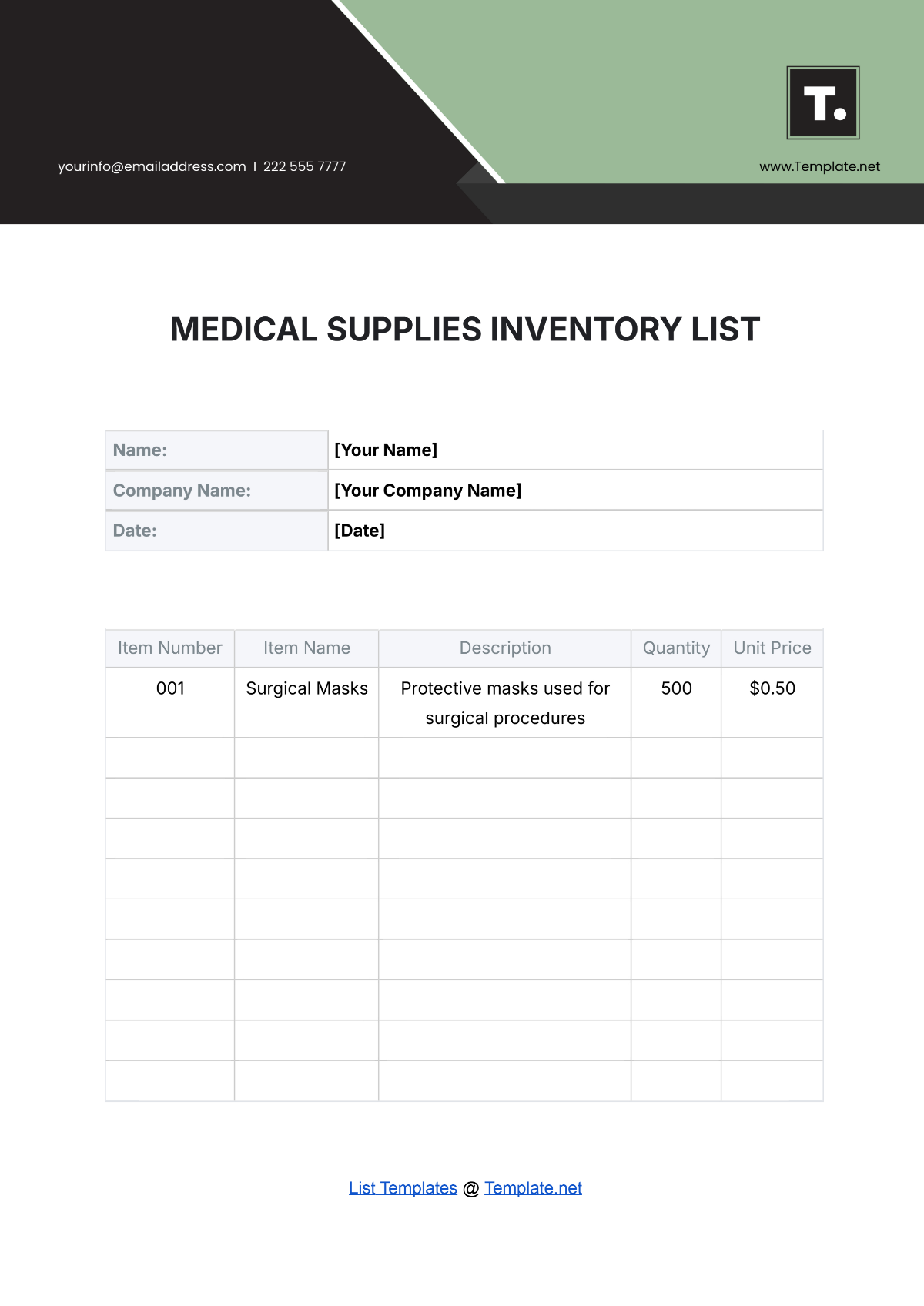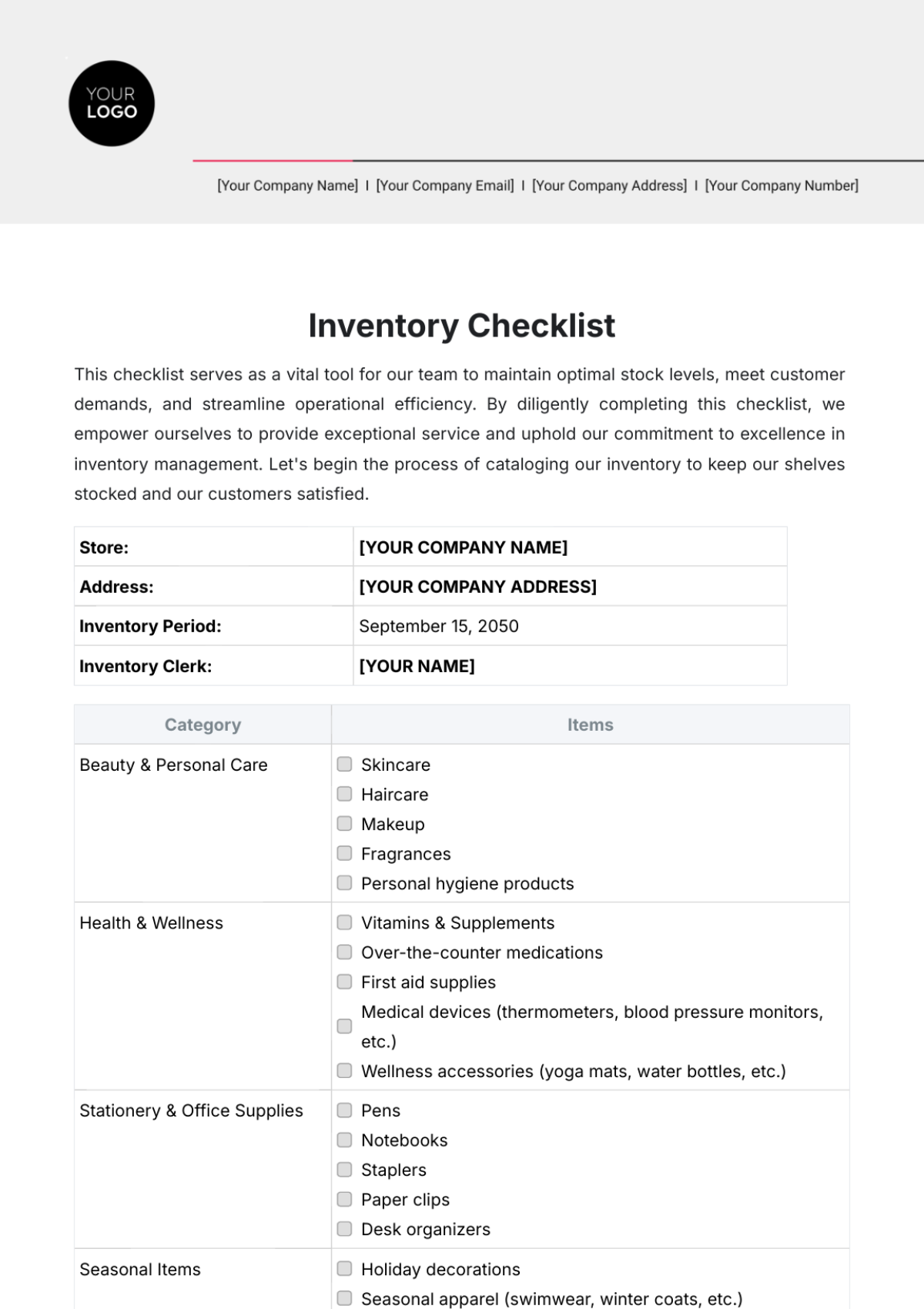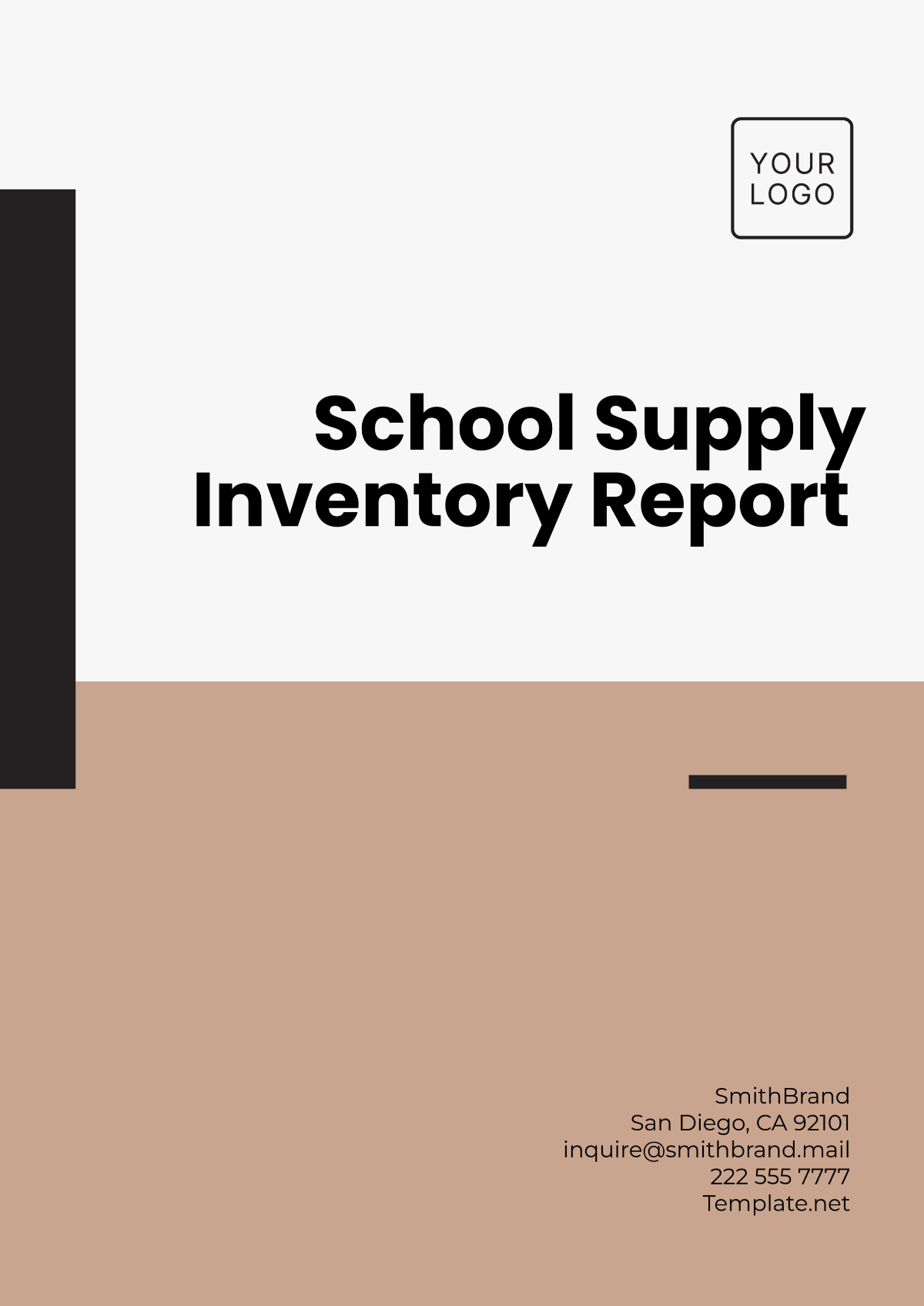Retail Store Inventory Report Layout
Company: [Your Company Name]
Prepared by: [Your Name]
Report Period: [Date]
This report provides a comprehensive overview of the inventory status, management, and analysis for the retail store. It aims to detail the current stock levels, categorize inventory, and offer insights into inventory turnover and management strategies.
1. Introduction
The effective management of inventory is crucial for the success of any retail store—maintaining the right balance between stock availability and cost control. This report is designed to present an in-depth analysis of the inventory situation, offering insights and potential strategies for optimization.
2. Current Inventory Overview
This section provides a comprehensive overview of the current inventory, including details on stock levels, categorization, and valuation.
2.1 Stock Levels
The following table illustrates the current stock levels across various product categories:
Category | Product | SKU | Available Quantity | Reorder Level |
|---|---|---|---|---|
Electronics | Laptop | ELE-101 | 50 | 30 |
Home Appliances | Blender | HOM-202 | 20 | 10 |
Clothing | T-Shirt | CLO-303 | 200 | 150 |
2.2 Inventory Categorization
The inventory is categorized into several key areas to simplify management and improve tracking:
Electronics
Home Appliances
Clothing
Furniture
Groceries
2.3 Inventory Valuation
Understanding the value of inventory is essential for financial reporting and decision-making. The valuation of current inventory is based on the cost price of goods. The total inventory value at cost price is $500,000.
3. Inventory Turnover Analysis
Inventory turnover is a crucial metric for evaluating the efficiency of inventory management. This section analyzes the stores' turnover rates and identifies trends over time.
3.1 Turnover Rate Calculation
The inventory turnover rate is calculated using the following formula:
Inventory Turnover Rate = Cost of Goods Sold (COGS) / Average Inventory
For the last fiscal year, the store reported a COGS of $2,000,000 and an average inventory of $400,000. The calculated turnover rate is 5.
3.2 Trend Analysis
A monthly analysis of turnover rates reveals fluctuations around major sales events such as Black Friday and Christmas. Strategies are suggested to maintain consistent turnover rates throughout the year.
4. Inventory Management Strategies
Effective management of inventory involves various strategies to ensure optimal stock levels while minimizing holding costs and risks of stockouts. This section outlines recommended strategies for the retail store.
4.1 Use of Technology
Implementing advanced inventory management software can automate processes, improve accuracy, and provide real-time data. Such technology can support:
Automated Reordering
Data Analytics for Demand Forecasting
Integration with Online Sales Platforms
4.2 Supplier Relationship Management
Building strong relationships with suppliers can lead to more favorable terms, prompt deliveries, and improved pricing. This involves:
Regular Communication
Negotiating Better Terms
Collaborative Planning and Forecasting
4.3 Regular Audits and Inventory Optimization
Conducting regular audits and stock reviews helps identify discrepancies, avoid overstocking or stockouts, and ensure inventory accuracy. This strategy involves:
Scheduled Physical Inventory Checks
Inventory Turn Analysis
Optimization of Storage Solutions
5. Conclusion
In conclusion, maintaining a balanced and efficient inventory system is a dynamic and ongoing process crucial to the success of the retail store. Continuous improvement in tracking, analysis, and management, combined with strategic use of technology and supplier relationships, will enhance operational performance and customer satisfaction.
6. Recommendations
Based on the analyses and insights from this report, the following recommendations are advised:
Invest in modern inventory management technology to streamline operations and improve accuracy.
Enhance supplier relationships to gain flexible terms and improve stock availability.
Regularly assess inventory turnover rates to identify and address slow-moving stock items.
Conduct periodic inventory audits to ensure integrity and optimal stock levels.
